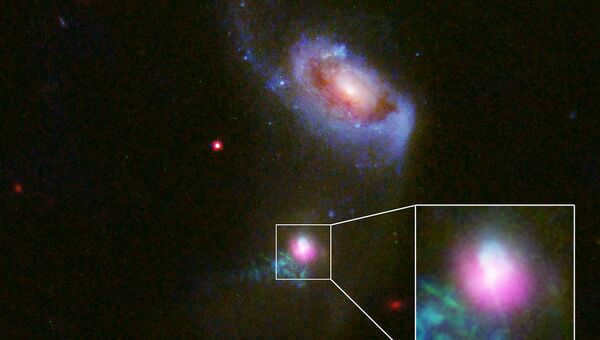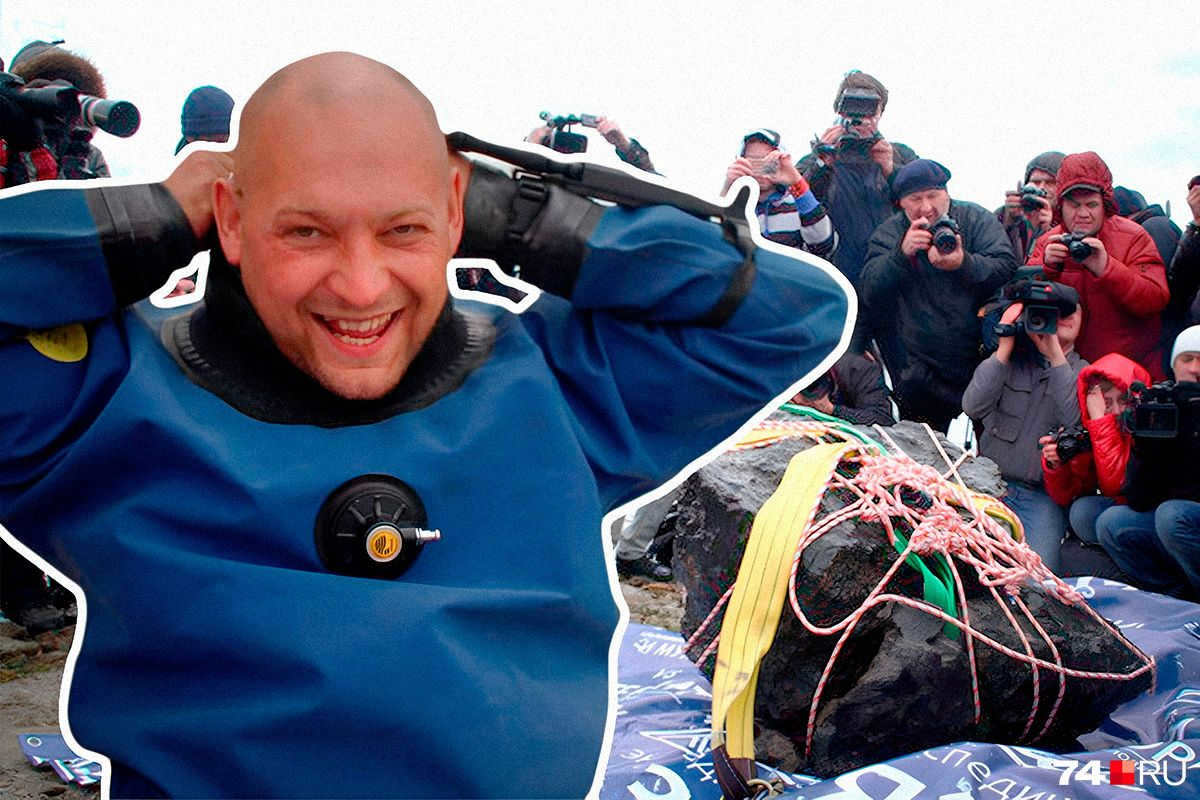
Exactly a decade ago, on February 15th, a meteorite known as Chelyabinsk crashed down in the Urals. Experts claim that it didn’t possess the power to wipe out the entire planet, but it could certainly obliterate a medium-sized town. Fortunately, a stroke of luck led the celestial “rock” to descend into Lake Chebarkul instead, causing havoc in Chelyabinsk and instilling fear in nearby Yekaterinburg. Astonishingly, thousands of windows shattered, walls crumbled, yet not a single fatality occurred, only injuries were sustained.
After the initial shock wore off and people began to appreciate the unprecedented nature of the event, it became evident that the meteorite was like a new form of treasure. Fragments of extraterrestrial rock were eagerly collected from the forests and fields, with the largest piece being retrieved from the depths of Lake Chebarkul. The task of locating and retrieving the meteorite was entrusted to the Aleut – Special Works Service, a company based in Yekaterinburg. How exactly did they go about searching for and raising the meteorite? What challenges did the divers face, both practical and supernatural? And what other mysteries might still lie at the bottom of the lake? As the anniversary of the meteorite’s fall approached, 74.RU journalist had the opportunity to interview Nikolay Murzin, the founder of the company and the leader of the historic expedition, to find out.
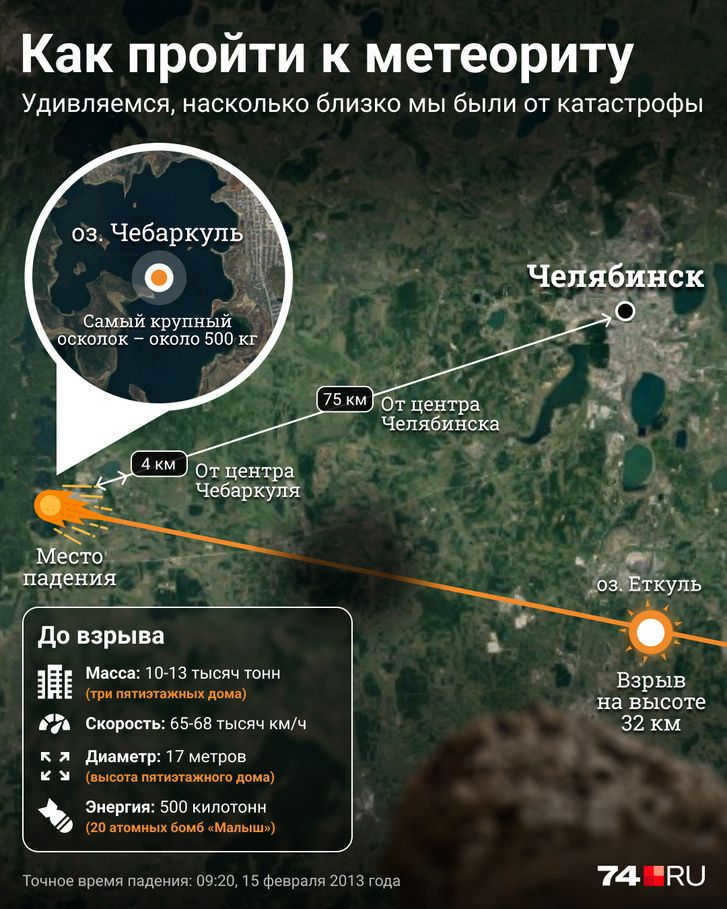
“It took a month and a half to dig the hole”
— Nikolay Eduardovich, the meteorite fell during winter, and the largest fragment was not extracted until fall. Why wasn’t it done immediately?
– The task always appears easy once it is completed. As I recall the incident, the military personnel were the first to arrive on the scene. They dived in, and one of their divers nearly drowned. Then the lifeguards arrived and dived in, but one of their employees also almost drowned. We closely followed this incident, and even then we realized that we would require specialists with experience in handling complex and dangerous tasks.
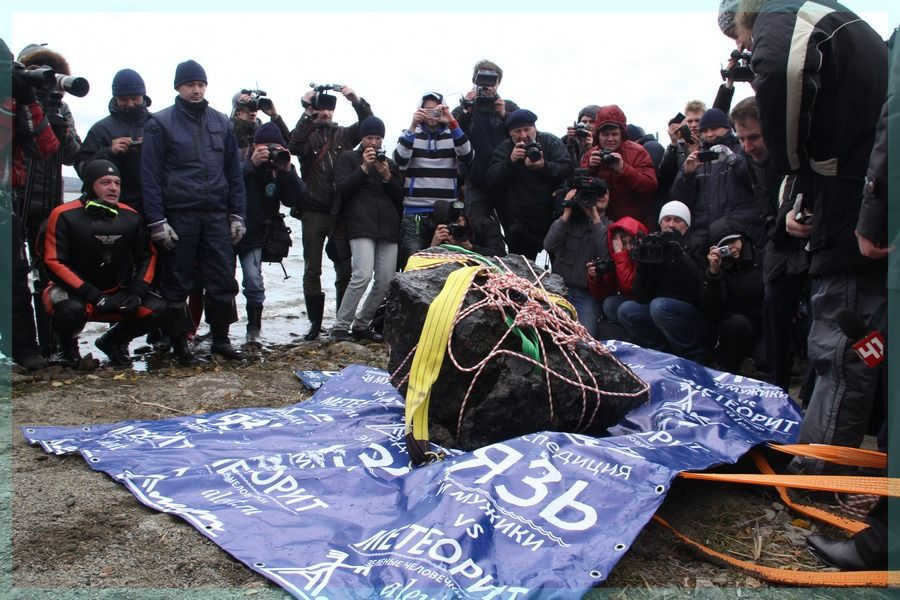

– How did you determine the exact location of the meteorite in the lake?
– We arrived at the scene and gathered all of the available data and research. We had the opportunity to meet Nikolay Lavrentievich Melnikov, a local resident whose home camera captured the moment of the meteorite’s descent. He, being a former military personnel, used azimuths (the angle between the direction to the north and the selected object) from the mine to the coastal landmarks. We plotted these points on a map and obtained a specific location. Then, we were provided with an aerial photograph, which allowed us to further refine the location. We converted it into geographic coordinates and began our work in that area.

Using an echo sounder, we were able to detect a signal and subsequently spent a month and a half digging a hole to reach it. The water depth was approximately 9 meters, at which point the silt began. In these conditions, visibility dropped to zero. We then had to dig an additional 9 meters through the silt, sometimes going even deeper. Despite the challenging circumstances, we were able to successfully retrieve the stone. We carefully wrapped it with soft slings and used a winch to lift it up. While 654 kilograms may not seem heavy for a diver, it was still a significant weight considering I had to lift it 800 times more than that.
On February 15, 2013, a meteorite weighing approximately 10,000 tons entered the Earth’s atmosphere, hurtling at a speed of around 19 kilometers per second. The celestial object detonated at an altitude of roughly 25 kilometers near Chelyabinsk, resulting in a meteor shower. The explosion released an energy equivalent to approximately 500 kilotons of TNT. Fragments weighing a total of 654 kilograms landed in Lake Chebarkul. The largest fragment, weighing around 500 kilograms, is currently housed in the State Historical Museum of the Southern Urals.
— I distinctly recall a floating platform being present on the lake, from which divers would descend.
– A special platform measuring 6 by 8 meters was used to mount a hangar for divers and equipment, which was securely anchored to the bottom. The platform had a carrying capacity of 6 tons. This was necessary because the platform had to support surface equipment weighing one and a half tons, as well as underwater structures weighing three tons.
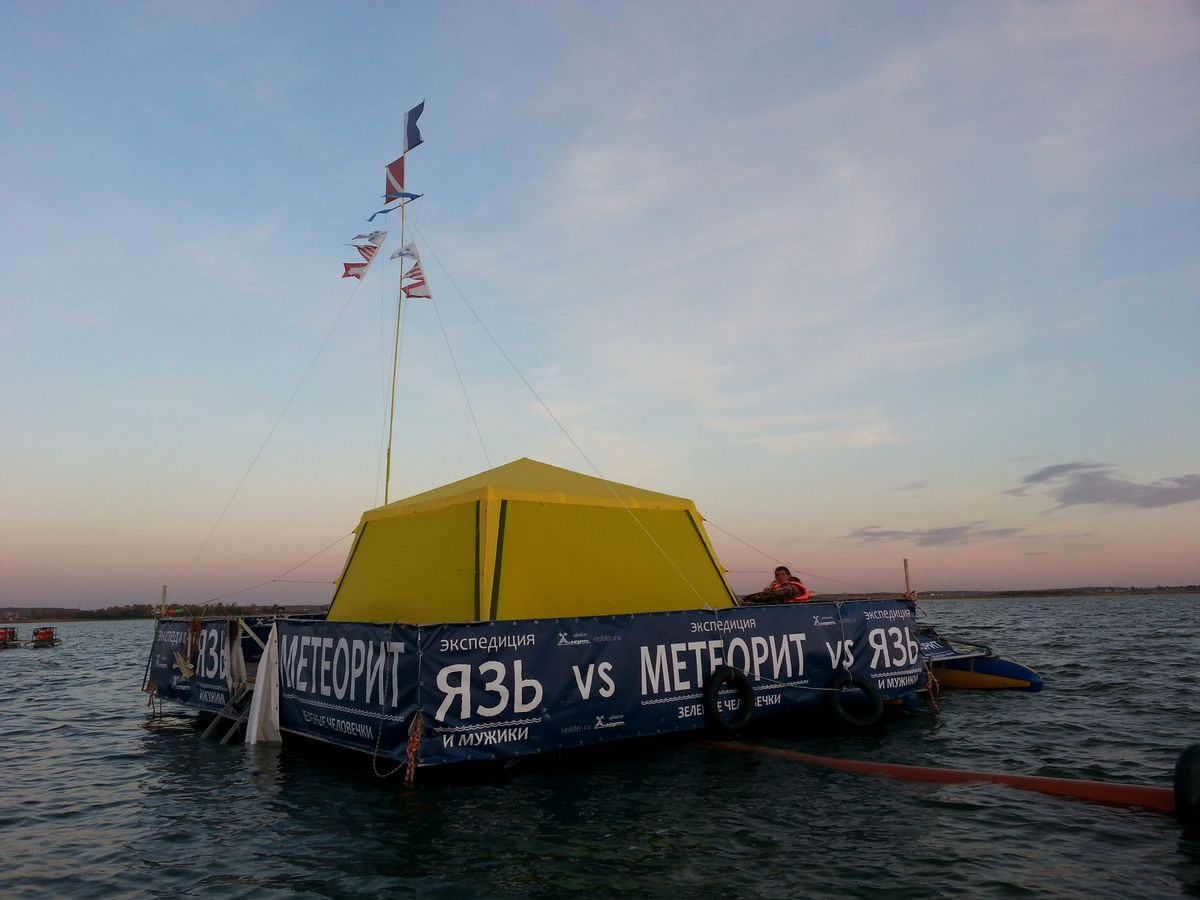

– In simple terms, we were relocating it from one location to another. Chebarkul is a recreational lake, so it was crucial to handle the sediment removal process with caution. Removing anything from the water can impact the plankton, so we had to assess the potential harm to the aquatic ecosystem.
We utilized a casing pipe and employed pumps to redirect the silt 60 meters away, then gradually lowered it through a hose with a diameter of 3.5 meters and equipped with a stilling device at the end. To ensure that the silt settled uniformly, its descent speed had to be limited to no more than 5 centimeters per second. This aspect is worth highlighting: we deliberately extracted a significant amount of silt in order to reach the stone. However, throughout the entire process, there was no presence of muddy patches on the lake. This is no simple task, as even the slightest movement or disturbance from a person can cause turbidity. The process of pumping took a considerable amount of time.
In essence, the lake remains unchanged – the water remains in its place, the silt and nutrients have not been removed, and the plankton has not suffered. Thus, the removal of the foreign object can be regarded as a cleansing of the lake.
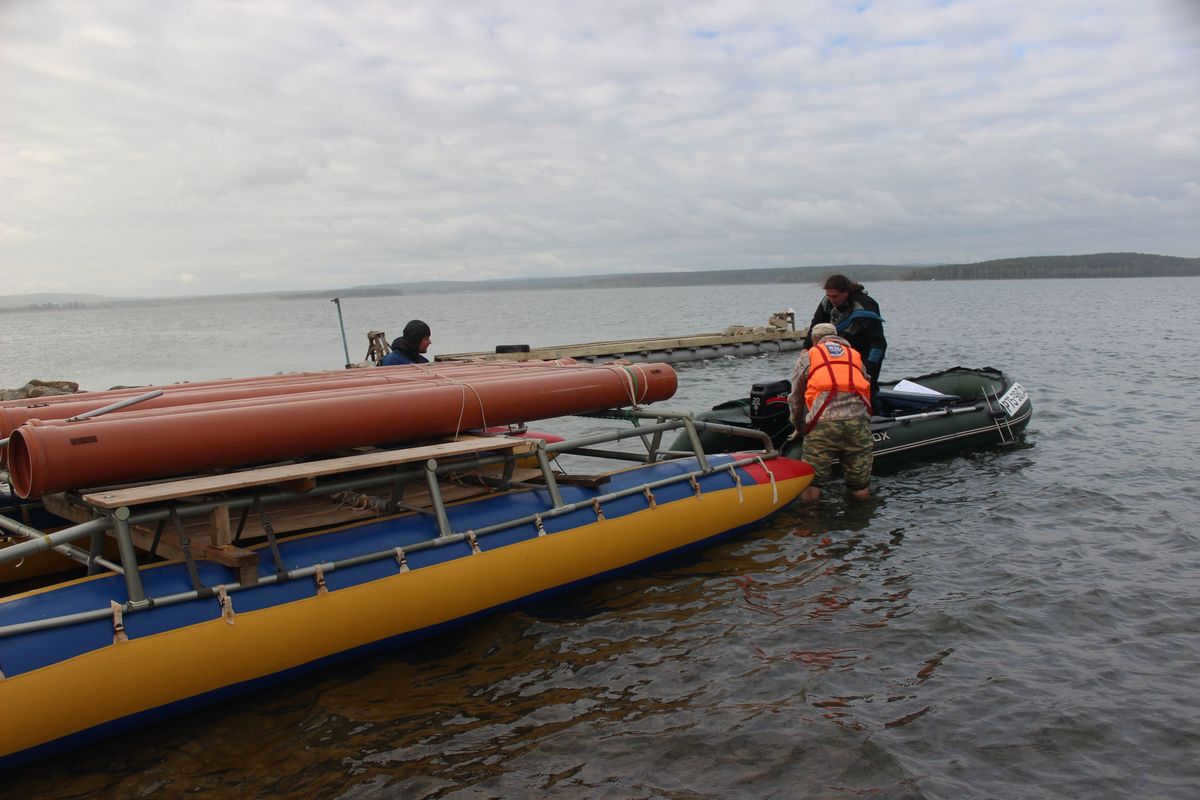
– Have you encountered any interference from collectors who were searching for fragments along the meteorite’s path?
– No, the initial excitement around collecting pebbles from the meteorite fall has died down. However, we did have to chase away people on motorboats. Thankfully, we had assistance from the GIMS (State Inspectorate for Small Vessels of the Ministry of Emergency Situations of Russia) and rescuers. They ensured that the boats did not disrupt the divers’ work. We are extremely grateful to them for protecting us from curious individuals.
However, a situation arose. Upon our arrival, we discovered that all of our underwater equipment had been overturned and damaged, with slings being cut. Evidently, someone had mistaken our belongings for the rocks we had discovered and believed we were storing them there. Ironically, this location was merely a pump exhaust. As a result, we had to invest a considerable amount of time into repairing the damages.
— Did you experience any unforeseen circumstances?
– It was extremely astonishing for us when we were able to detect the meteorite using the echo sounder. In theory, echo sounders are not capable of displaying anything at such depths with silt. Additionally, in mid-September, after conducting initial surveys, we generated a three-dimensional model of the meteorite and delivered it to the client. Remarkably, a month later in mid-October, we successfully retrieved the stone, and it matched the 3D model precisely. This outcome greatly surprised us and remains a source of pride. It was an unexpected and highly rewarding triumph, while the rest of the process involved sheer hard work.
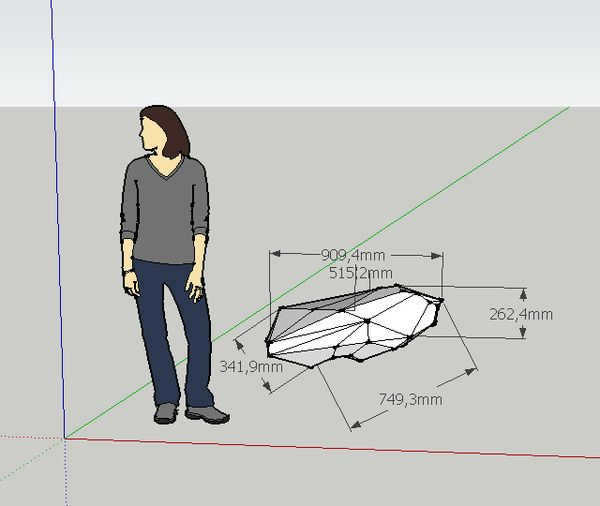

"There are individuals who have faith in rocket ships."
— It is widely known that there are still many individuals who believe that what fell into the lake was not a meteorite, but rather a rocket. How do you personally feel about this theory and other hypotheses?
– Why not? In the past, there were stone axes. There are people who believe in stone rockets. Well, and we were very satisfied with the explanations provided by the “experts”, such as why there is no stone present and stories about extraterrestrial beings – aliens (smiles). The locals never had any doubts that some of them were sitting at the bottom, embraced by a stone. We didn’t even argue – having a positive attitude greatly assisted us in our work.
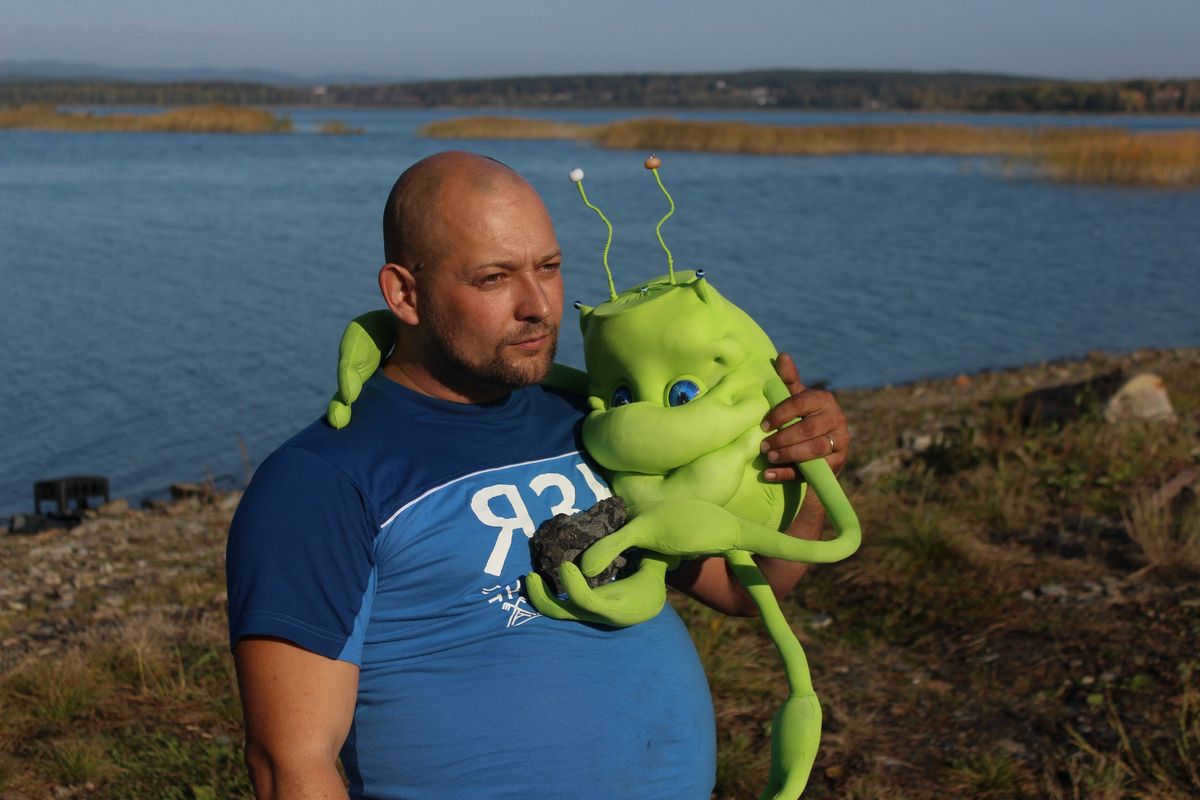

There were numerous rumors circulating. Some claimed that the stone was found and now they were just trying to cover up illegal activities. We paid no attention to such speculations. When people who are not familiar with the intricacies of diving work start discussing its speed and cost, it becomes impossible to have a meaningful discussion.
From the moment we saw the meteorite on the sonar, we had no doubts whatsoever. We knew we had to get to work. On the day the sonar detected the meteorite, there was a touch of mysticism. Two out of the three pumps that were supposed to extract the sludge malfunctioned. The guys joked that the clever sapropel didn’t want to part with the meteorite so easily.
– How did the officials respond? Did they demand, prohibit, or push for anything?
– There wasn’t any specific reaction from the officials. The only issue was that the start of the project was delayed because they had to wait a long time for approval from Rosrybolovstvo. The problem was that when the tender was announced, it turned out that the customer hadn’t bothered to obtain the necessary approval. However, we still managed to get the approval much faster than usual. Normally, it takes at least 30 days, but we received it in just two weeks. We are grateful to everyone involved for their help in expediting the process.
When the first discoveries were made (divers retrieved 12 fragments, five of which, including a 4.8-kilogram piece, were identified as meteorites. – Ed.), we exceeded the original time frame of the contract. Delays were caused by inclement weather conditions and the need for approvals. I approached the clients and explained, “We need to extend the contract.” They simply asked, “Are you certain the meteorite is present?” – “Absolutely,” I replied. And that was all it took – they agreed to extend the contract until the end of October. And we expedited the retrieval process.
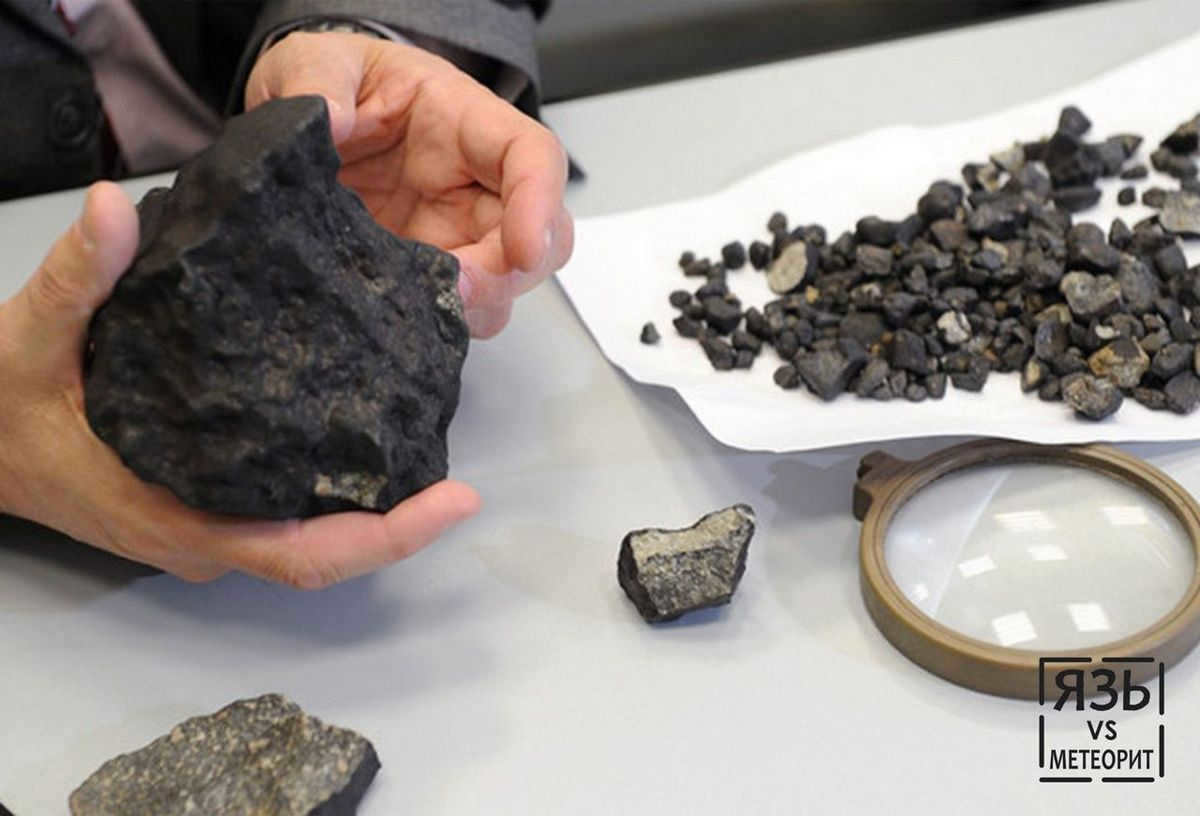

— Has the hole that was excavated a decade ago been filled in with sediment?
– Yes, it has, although it is uncertain to what extent. Approximately three meters of sludge were precisely poured into the hole. The structure itself was preserved, but we sealed off the tunnels leading to it to prevent any accidental falls. We specifically came here during the winter, even though it was not a contractual obligation. However, there will always be a large number of curious individuals. During the summer, divers of all kinds, with varying levels of experience or none at all, will venture there at great risk to their lives. And I am familiar with how the aviation investigation system operates in Russia.
— Did you and your fellow divers take a fragment of the meteorite as a memento?
– No. Everything that was found and lifted was turned in – there is a report for each individual pebble. The report includes information such as its weight, when it was lifted, and its size. We had really hoped that after everything was done, we would receive something as souvenirs. And to be honest, we were even offended that we didn’t receive anything. Although, we later found out that many pebbles ended up elsewhere, and for some reason we were forgotten.
— Perhaps they thought you had caught and cut your own pebbles.
– Well, what can I say… It says a lot about the people who think that way, not about us.
— Did you visit the meteorite at the museum?
– We had a previous experience with it, sometime after the climb. There is no mystique for us anymore. It is expected that it would have a different weight: they removed the excess parts and inserted the largest one. I presented a stone with a weight of 654 kilograms. What occurred to it during transportation, what sort of cutting and legal issues – are not our responsibility.
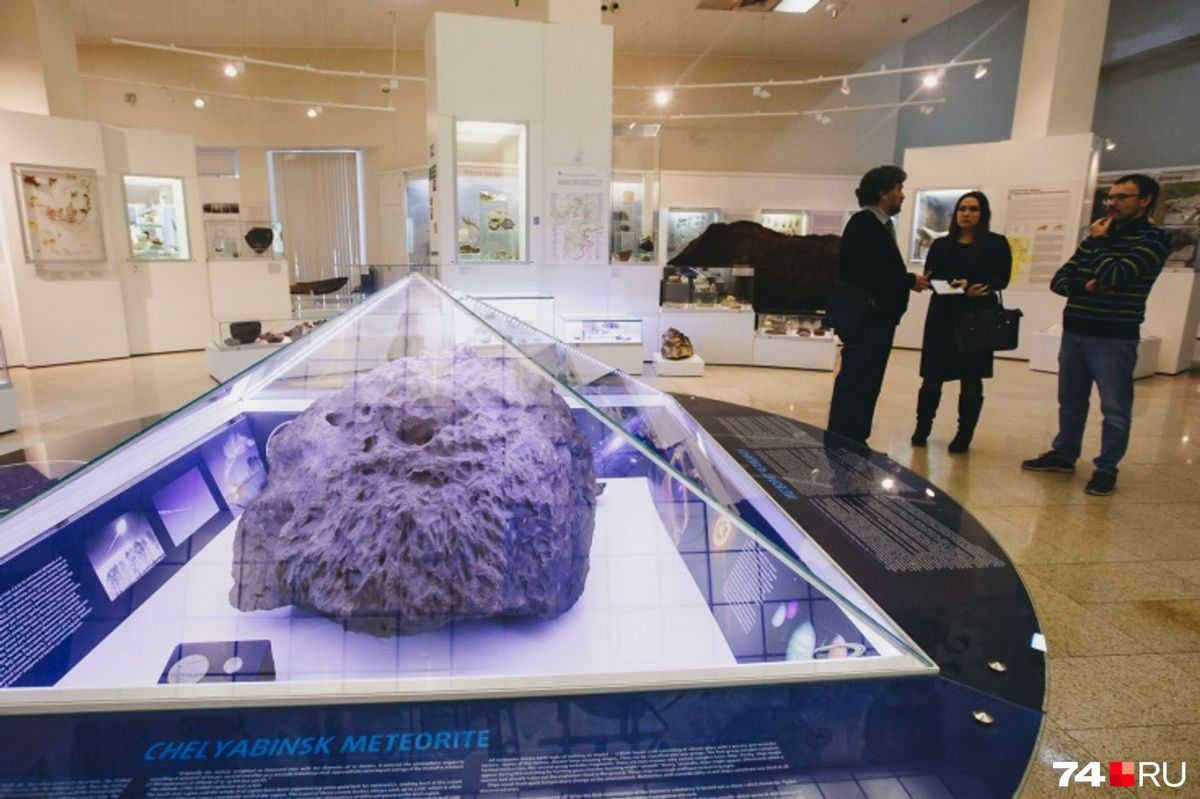

– What was remarkable about the operation to retrieve the Chelyabinsk meteorite?
– We had an excellent team, and we completed all the tasks with enthusiasm and determination. And we didn’t get anything for it (laughs). The weather conditions were terrible, and the circumstances were extremely challenging. We took more risks than we should have. After 10 years, we have gained more wisdom. If we were to do the retrieval now, we would double the safety measures and approach the work differently.
“Working in cold water is a more enjoyable experience.”
– You mentioned that the price for lifting the meteorite was too low. It was initially reduced from 3 to 1.67 million rubles at the auction. Why did you ultimately choose to participate in the auction?
– The cost was completely inadequate considering the complexity of the task, but I had a strong desire to be involved. We negotiated a price below our actual costs, and it was primarily a PR move. We had already completed enough projects that year and felt we could afford to dedicate a couple of months to improving our reputation.
– So, how did it impact your reputation? How do you reflect on the outcome after 10 years?
– This is an excellent tool that saves a lot of time when communicating with customers. Previously, we would have to spend time talking about our expertise and our reputation as renowned specialists in the field of diving. But now, all we have to do is mention that we were involved in the recovery of the Chelyabinsk meteorite, and all doubts and inquiries are instantly resolved.
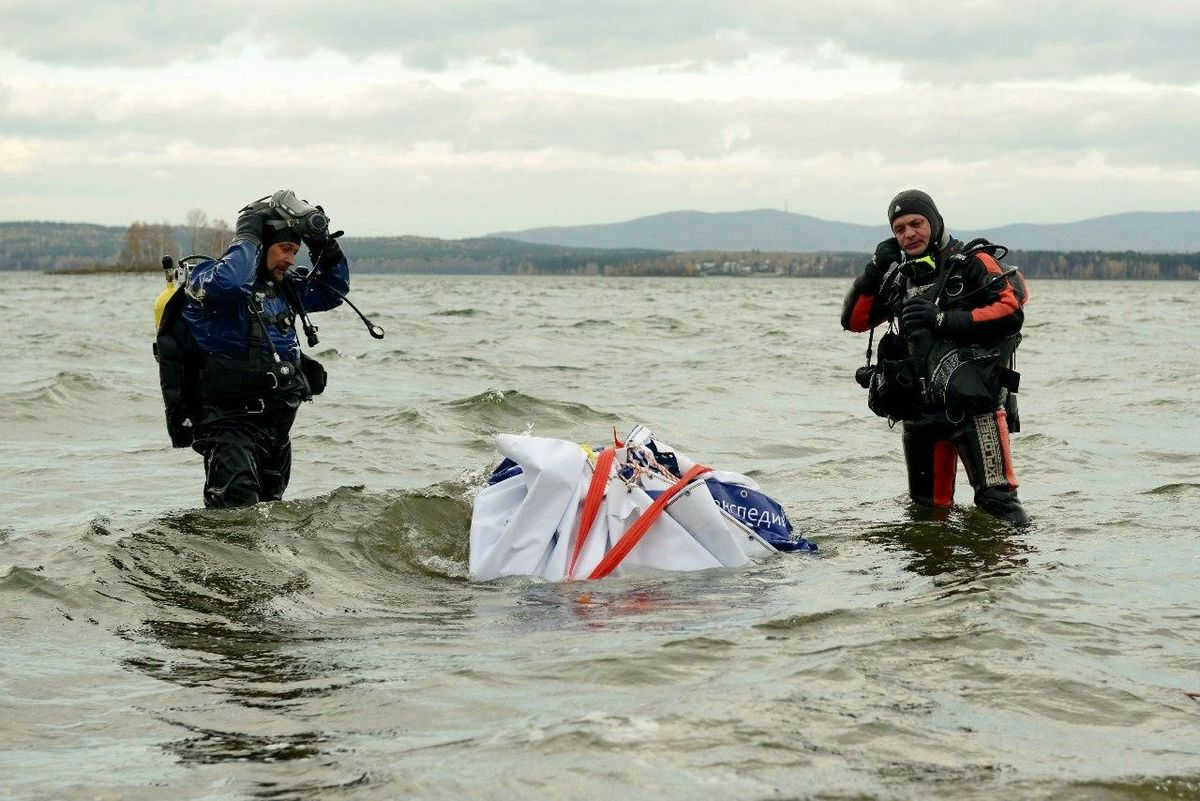
– Have you had the chance to capture any other celestial bodies?
– We haven’t lifted any meteorites, but we did work in Lithuania last year – conducting a survey. Perhaps in the coming year or in the future, if they have sufficient funds, we will retrieve a Lithuanian meteorite. There is a similar situation, but the space rock fell over 100 years ago and also landed in a lake. As a result, there is limited data available, and a thorough search is necessary.
– Why do they tend to fall into lakes?
– No, meteorites fall everywhere. They can fall into lakes, especially in winter, leaving a clear trace. So, we are constantly searching for meteorites in mountains, deserts, and even in Antarctica. During the summer, it might be difficult to spot a meteorite falling into a lake. And even if we do see it, it can be challenging to determine the exact location of the fall. In this particular case, we had an accuracy of 4 meters, and it required a lot of work to reach the meteorite. However, we were certain that it was there.
— Nikolai Eduardovich, besides the meteorite retrieval project, what other landmark projects have you been involved in?
– We have some exceptional projects that we take great pride in, however, due to contractual obligations, we cannot disclose all of their names. Recently, we encountered a particularly challenging situation where we had to clear a flooded underground tunnel at an old factory. This tunnel, which was constructed 50 years ago, stretched for 200 meters and lacked any side passages. Additionally, the water temperature inside the tunnel was surprisingly cold, measuring under 40 degrees Celsius! Strangely enough, working in cold water is actually more preferable than working in warm or hot water, as it is easier to protect oneself from the cold. This project was truly one-of-a-kind, as it involved working underground and underwater simultaneously, with entry being made through a well. Our team of highly skilled industrial divers rose to the occasion and successfully completed the job!
Once we found ourselves clearing the only fairway in the Sea of Okhotsk. It was obstructed, causing the city to be cut off from supplies. The situation was complicated by the constantly shifting currents, which allowed us to work for only 20 minutes every 4 hours. We even had to lift a 290-ton pumping station that had sunk in the middle of the swamps. This required us to bring it ashore in one piece. We thrive on such challenging tasks, as they give us something to boast about!
Now, I am currently in Chile. While discussing potential work opportunities, I decided to take a vacation in Atacama – the driest desert on Earth. Rainfall occurs only once every few decades in this fascinating place, situated on the West Coast of South America. I have been longing to visit for a long time.

In 2013, there was a remarkable event that resulted in over 1,500 casualties, setting a record since the start of meteorite impact observations. The blast wave from the impact caused windows to blow out in numerous houses, trees to be knocked down, and people to sustain injuries of varying severity from flying shards of glass. Approximately one hundred individuals required hospitalization, but fortunately, there were no fatalities.
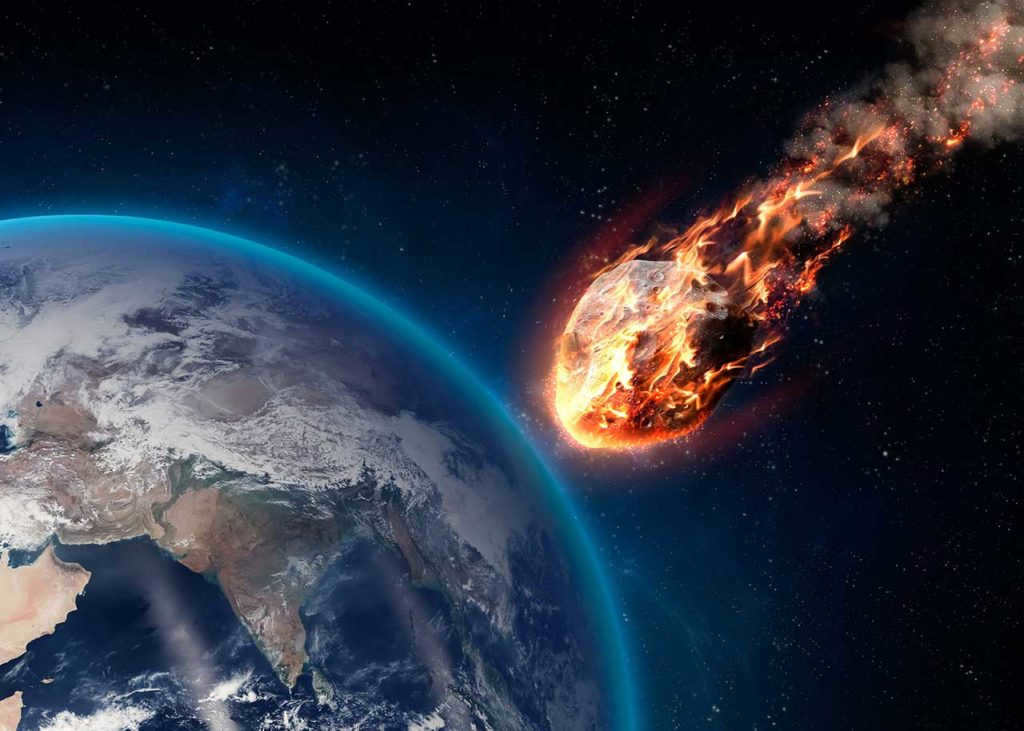
Witnesses, caught off guard by the unexpected event, frantically came up with various theories: a nuclear explosion, a plane crash, a spaceship mishap, and even a UFO assault. In reality, our planet was paid a visit by a cosmic entity – the Chelyabinsk meteorite.
When and in what conditions did the meteorite descend?
The meteorite descended from the sky of the Southern Urals on the morning of February 15, triggering a state of emergency in the city and its surroundings. Earlier, the extraterrestrial object passed over cities and villages in northern Kazakhstan, as well as the Orenburg, Sverdlovsk, Tyumen, Kurgan, and even Samara regions, without causing any disruption. However, the residents of Chelyabinsk were not as fortunate.
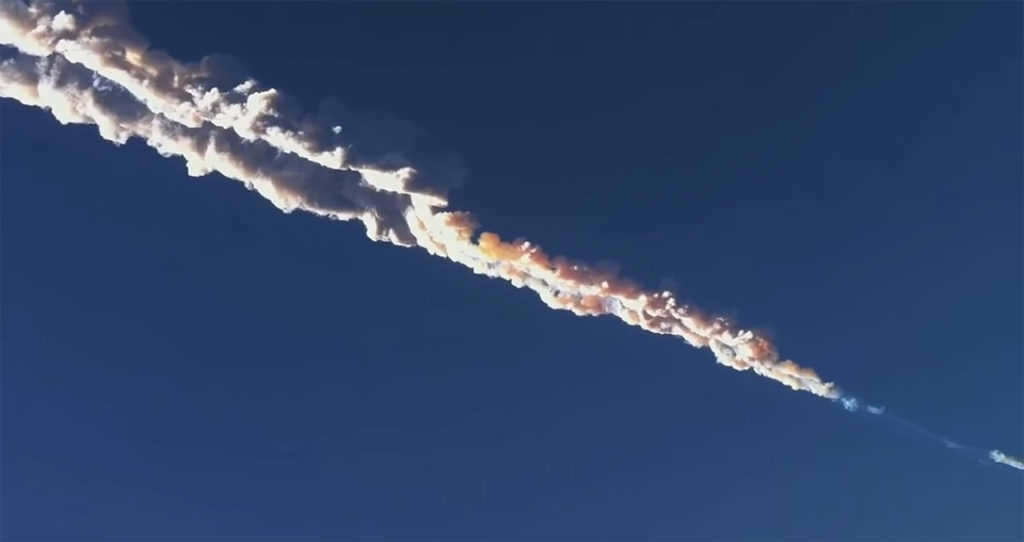
Witnesses from the city of Chelyabinsk shared their accounts of the moment they first witnessed a bright flash of light. The experience was particularly intense for those who were indoors. Many described feeling as though their rooms were suddenly illuminated by the beam of a car’s headlights, followed by a shock wave several minutes later. The windows rattled violently and the walls shook, reminiscent of an earthquake.
According to NASA (USA), the meteorite was a fragment of an asteroid weighing over ten thousand tons, which entered the Earth’s atmosphere at a velocity of 17-18 km/s. Descending to a height of 45 kilometers, the object began to break apart into smaller pieces, which then further fragmented. As a result, the meteorite scattered across the Earth’s surface at a distance of approximately 80 kilometers. Previously, it was believed that only space bodies measuring a hundred meters posed a threat to humanity. However, the Chelyabinsk meteorite, which measured around nineteen meters, caused significant damage. This discovery has compelled scientists to view the issue of small space objects as a potential danger to our planet in a new light.
Following half a minute of flight, the object underwent a separation, which was accompanied by three detonations, with the initial one being the most forceful. The most intense flash lasted for a few seconds, followed by a shockwave. The amount of energy released in the explosion equated to five hundred kilotons, which is equivalent to thirty times the power of the atomic bomb dropped on Hiroshima. In terms of dimensions, the Chelyabinsk meteorite is only surpassed by the renowned Tunguska event, which occurred in the taiga of East Siberia during the summer of 1908.
Meteorite Landing Location
The center of the explosion was determined to be in Emangelinsk (Yuzhnouralsk). A team of scientists has identified several areas where debris was projected to descend. Primarily, this includes the vicinity of the Chebarkul town, as well as the Zlatoust district. One fragment landed in Lake Chebarkul. At the time of impact, there were ice fishermen on the lake who witnessed the fragment colliding with the ice, causing a water column approximately four meters tall to shoot out from the resulting hole in the ice.
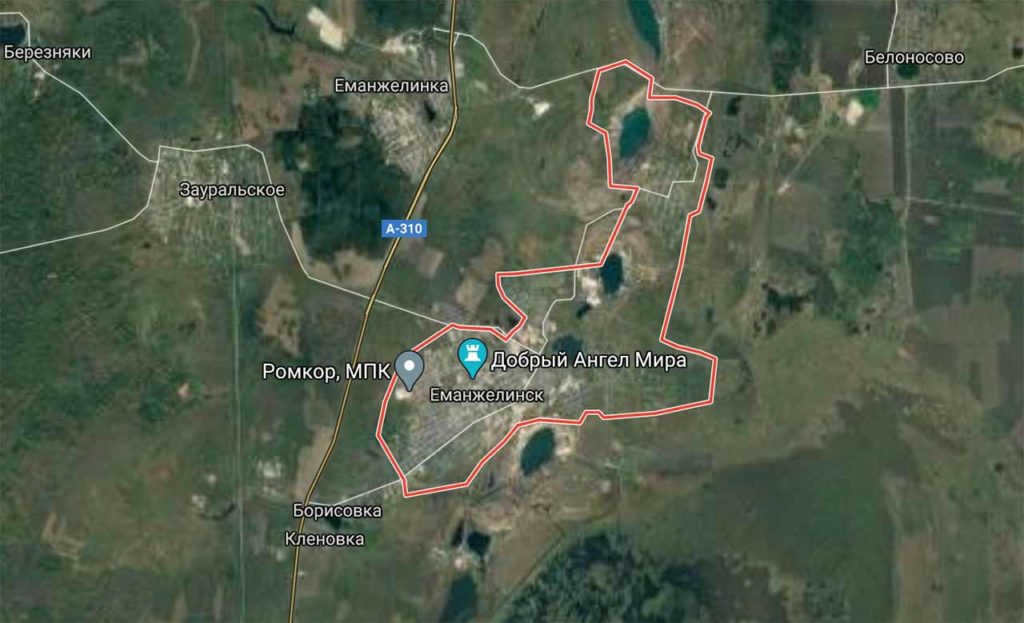
In the vicinity of Yemangelinsk and Travniki settlement, the explorers made a discovery of over a hundred pieces, with a total weight of approximately three kilograms, which were gathered along the banks of Lake Chebarkul.
What caused the Chelyabinsk meteorite to go unnoticed?
The Chelyabinsk meteorite went undetected due to its incredibly high velocity, which surpassed the capabilities of modern Earthly devices to track. Additionally, its trajectory, coming from the direction of the sunrise, made it nearly invisible to observation. These factors were the primary reasons why the Chelyabinsk meteorite went unnoticed by special observation objects.
Traces of the object were not immediately discovered on Lake Chebarkul. The initial search efforts did not yield any results, primarily due to the extremely difficult conditions in the area. The Chebarkul meteorite swiftly penetrated through the ten-centimeter thick layer of silt and reached the granite layer. It wasn’t until October 2013 that a piece of the meteorite, lying at a depth of thirteen meters, was finally raised from the lake. This particular piece weighed 654 kilograms and resembled a “pebble”. However, during the lifting process, it broke into multiple fragments, with the largest one weighing 473 kilograms. After being examined, the largest fragment was entrusted to the regional museum of local history.
Amazing information about the Chelyabinsk meteorite
The arrival of the meteorite in Chelyabinsk sparked a plethora of rumors, making any genuine intriguing details about its origin and purpose highly valuable.
- While no scientifically verified fragments of the Tunguska meteorite have been discovered, there is no shortage of physical evidence following the impact of the “Chelyabinsk” meteorite. The stones have been dissected, examined, and their magnetic and chemical properties extensively studied. The most substantial fragment is the one that landed in Lake Chebarkul.
- Interestingly, as stated by the staff at the Chelyabinsk Museum of Local Lore, the fragment is gradually decreasing in weight. This serves as evidence that the meteorite is not a solid mass, but rather contains pores. These pores allowed for the infiltration of lake water, which then underwent a slow evaporation process. As a result, the object has “shed” approximately 15-20 kilograms.
- The “Chelyabinets” meteorite became a significant celestial body in that it not only left behind fragments, but also left behind meteor dust. This event marked the first time that meteor dust could be collected following a meteorite’s impact. Had this event occurred in the summer, the dust would have simply blended in with the ground, but the snow provided the perfect preservation medium.
Research into the mysterious composition of the meteoric substance
Various theories have been proposed regarding the origin of the Chelyabinsk meteorite. The most credible hypothesis, put forth by S. Zamozdra, suggests that the meteorite is a fragment from an asteroid that came close to the Sun approximately 1-2 million years ago. Alternatively, some believe that the meteorite might be a component of a comet’s nucleus, as a substantial quantity of ice was discovered in its composition.
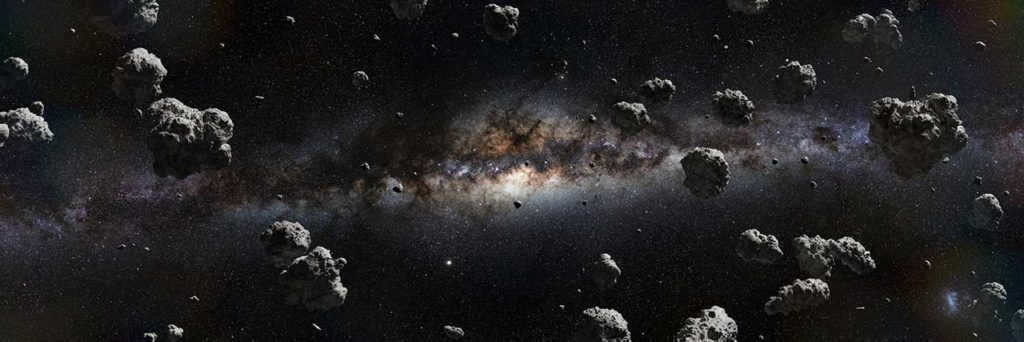
Approximately 300 million years ago, the Chelyabinsk meteorite, which was once part of a larger asteroid that had been in existence for over four billion years, separated and became its own entity.
Speaking about the chemical composition of the extraterrestrial entity, it falls into the category of ordinary chondrites of type LL 5. Previously, no similar meteorites had been discovered on Russian territory. Amidst the finely grained meteoritic mass, chondrules, which are spherical frozen droplets, stand out distinctly. They exhibit a great diversity in terms of mineral composition and structure. Oxygen, silicon, magnesium, sulfur, nickel, and iron are the predominant elements in the meteorite. However, nanocrystalline inclusions of copper and zinc are also present, which is atypical for meteorites. The formation of such nanocrystals requires extremely high temperatures and pressure, conditions that cannot be replicated artificially under current Earth conditions.
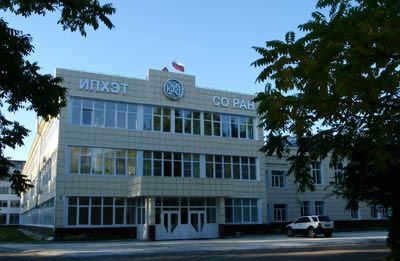
A team of scientists from the Siberian Branch of the Russian Academy of Sciences and Japanese researchers have made a groundbreaking discovery regarding the Chebarkul meteorite. It has been found to contain a rare substance called jadeite, which is rarely found in celestial bodies. The formation of jadeite requires extreme temperatures and pressure.
Implications of the Chelyabinsk meteorite impact
First and foremost, it is important to acknowledge the physical and psychological injuries suffered by individuals as a result of the incident. Official records indicate that a total of 1,613 individuals were affected. The majority of injuries were caused by fragments of shattered window glass. Some individuals experienced a sudden rise in body temperature during the flash, while there are reports of children sustaining burns on their hands.
The long-term consequences of the traumatic experience endured by the residents of Chelyabinsk and surrounding areas have yet to be fully comprehended. However, the intense shock caused by the event has had a detrimental impact on the mental well-being of many individuals. The characteristics of the incident, such as the earthquake-like tremors, the blinding flash, and the loss of mobile communication, are reminiscent of atomic explosions, thereby exacerbating the shock reactions experienced by people.
Approximately one billion rubles in material damage was incurred. Numerous city buildings sustained damage. Due to the incident occurring during the winter, schools and preschool institutions were forced to close. Additionally, a number of soccer matches had to be cancelled as a result of the damage to the walls of the Arena-Tractor stadium.
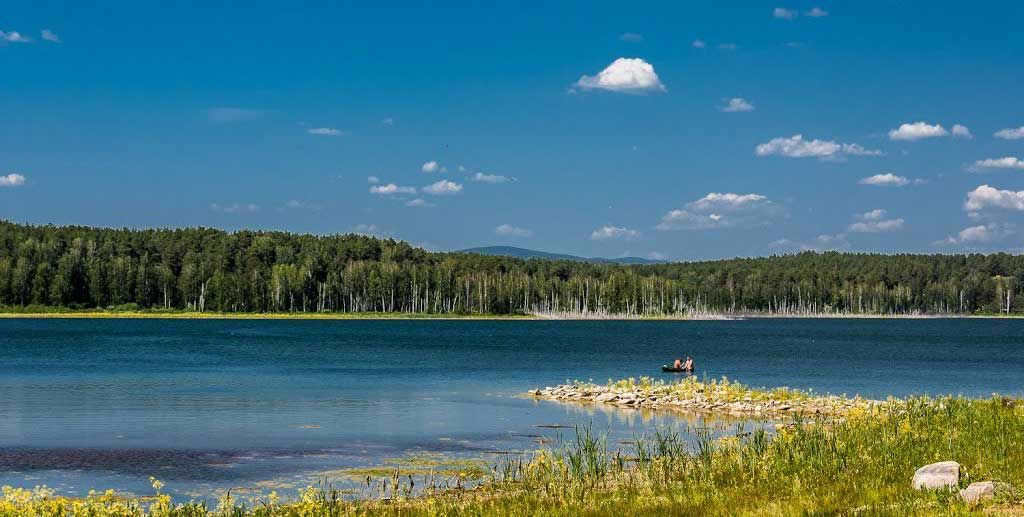
Regarding Lake Chebarkul, it remained unharmed by the impact of the meteorite. Interestingly, even more than two years later, the temperature of the water at the lake’s bottom has risen. The iron content in the water has also exceeded normal levels. Additionally, there was an initial occurrence of unusually high water “blooming.” However, all these abnormal indicators eventually returned to their typical state.
It is worth noting that scientists discourage visitors to museums from physically touching the meteorite. While many individuals may have the desire to experience the sensation of touching a celestial body and connect with the cosmic eternity, it is important to consider that the surface of the meteorite harbors an extensive amount of bacteria. The behavior of these microorganisms remains unpredictable at this time.
Response within the nation and internationally
Immediately following the incident, local Chelyabinsk EMERCOMs initiated a search for the remnants of the “extraterrestrial” object. The news of the event reverberated throughout Russia on the same day.
Local authorities’ reaction
In addition to EMERCOM, the regional sanitary and epidemiological station and local executive bodies were also involved in the response efforts.
The State Duma of the Russian Federation took charge of overseeing the aftermath of the “meteor shower.” The primary focus was on maintaining heat in the damaged residential buildings. All necessary services, including EMERCOM, medical personnel, police, and firefighters, were placed on high alert.
There was a lot of speculation on the internet that the “Chelyabinsk” was actually brought down by air defense forces. The military quickly issued a statement denying these claims, stating that it is completely impossible for any army in the world to shoot down an asteroid.
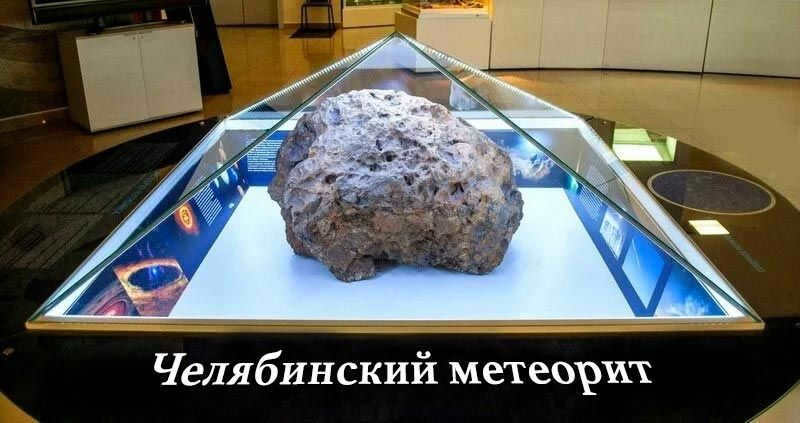
The Chelyabinsk and Chebarkul regions quickly embraced the names “Chelyabinsk meteorite” and “Chebarkul meteorite”. Even the mayor of Chebarkul took to the internet to encourage people to share their ideas and promised to reward the best suggestions with fragments of the “extraterrestrial” object.
Global Response
The renowned events in Chebarkul, a provincial town in the Ural region, have captured the attention of the entire world. As news spread, scientists, researchers, and curious individuals from various countries have flocked to this once obscure town. In fact, there has been a surge in demand from foreigners, particularly the Japanese, who have even enlisted the services of travel agencies to organize tourist groups to visit Chebarkul.
Variations of the Event
In addition to the explanations provided by scientists (such as detachment from a large asteroid and entry into Earth’s atmosphere), alternative hypotheses exist regarding the occurrence. The examination of the Chebarkul meteorite seeks to unravel the truth behind it.
- A trial of an innovative weapon or a space rocket. One proponent of this theory is LDPR leader V. Zhirinovsky, who attributes the event to the Americans and their secret weapon tests.
- Meteor shower. Some astronomers propose that the incident over Chelyabinsk was actually a comprehensive meteor shower, rather than a single object.
- Nibiru. Advocates of this mythical scenario assert that humans received a “message” from the enigmatic planet Nibiru.
A. Komanev, a representative of the Ufological Society from Ekaterinburg, has reported witnessing multiple instances in online videos where an unknown object is seen “pursuing” the Chelyabinsk meteorite and then flying away after passing through it.
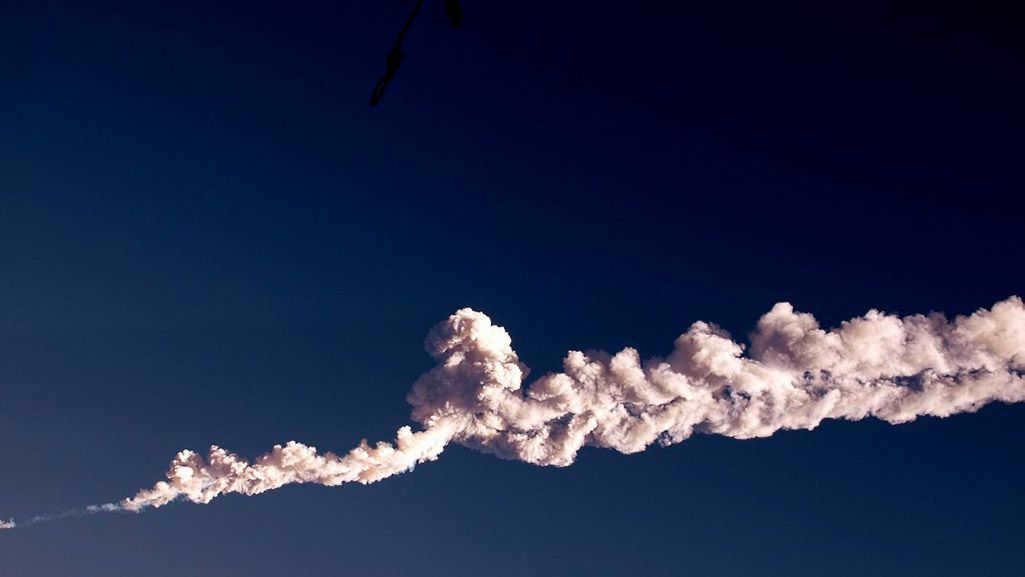
Following the explosion, the “extraterrestrial” object fractures. It may appear that sun glares are mistaken for UFOs, but that is not the case. All videos were captured from various perspectives. Moreover, immediately after the occurrence, residents of the Chelyabinsk region, who had previously witnessed UFO sightings, started reaching out to ufologists. According to Komanev, the presence of UFOs is consistently documented prior to major calamities.
Link between the Tunguska meteorite and the Chelyabinsk meteorite
Scientists and UFO enthusiasts alike are attempting to establish a connection between the two most significant “cosmic disasters” that have occurred in Russia. What similarities can be identified between these two incidents?
- UFO enthusiasts speculate that both meteorites were struck by unidentified flying objects. The Tunguska event, which took place in the summer of 1908, was allegedly targeted by fireballs launched from the Viluyskiye cauldrons. Local shamans had predicted months in advance that a “heavenly fire” would descend upon the Earth.
- Unlike the Chelyabinsk meteorite, which left behind tangible remnants after its explosion, the Tunguska meteorite left nothing but cosmic dust.
Today, visitors to the local history museum in Chelyabinsk have the opportunity to witness the presence of the “space guest”. Additionally, a smaller fragment of the meteorite is frequently sent on a journey to various exhibition pavilions across Russia. The regional authorities consistently organize a variety of events to commemorate this extraordinary event, including special recognition for children born on February 15, 2013. Finally, we invite you to enjoy a collection of stunning photographs capturing the incredible descent of the Chelyabinsk meteorite:
10 years ago, on February 15, 2013, a meteorite made its way into Lake Chebarkul. The astonishing news quickly spread across social media platforms and was covered by local, national, and international media outlets. In honor of this anniversary, “Good News” has compiled 18 peculiar and amusing articles from foreign media that highlight this extraordinary cosmic event.
“Oh, great, we can finally emerge from beneath the kitchen table.”
The Guardian, a British publication, may not have been very clever with its headline, but it does set the atmosphere: “Phew, you can finally crawl out from under the kitchen table. Take a breath of fresh air in your bomb shelter-turned-garden.” Following the descent of one fragment, Earth’s inhabitants were filled with concern that a larger meteorite would collide with the planet, and this time we would undoubtedly face serious trouble.
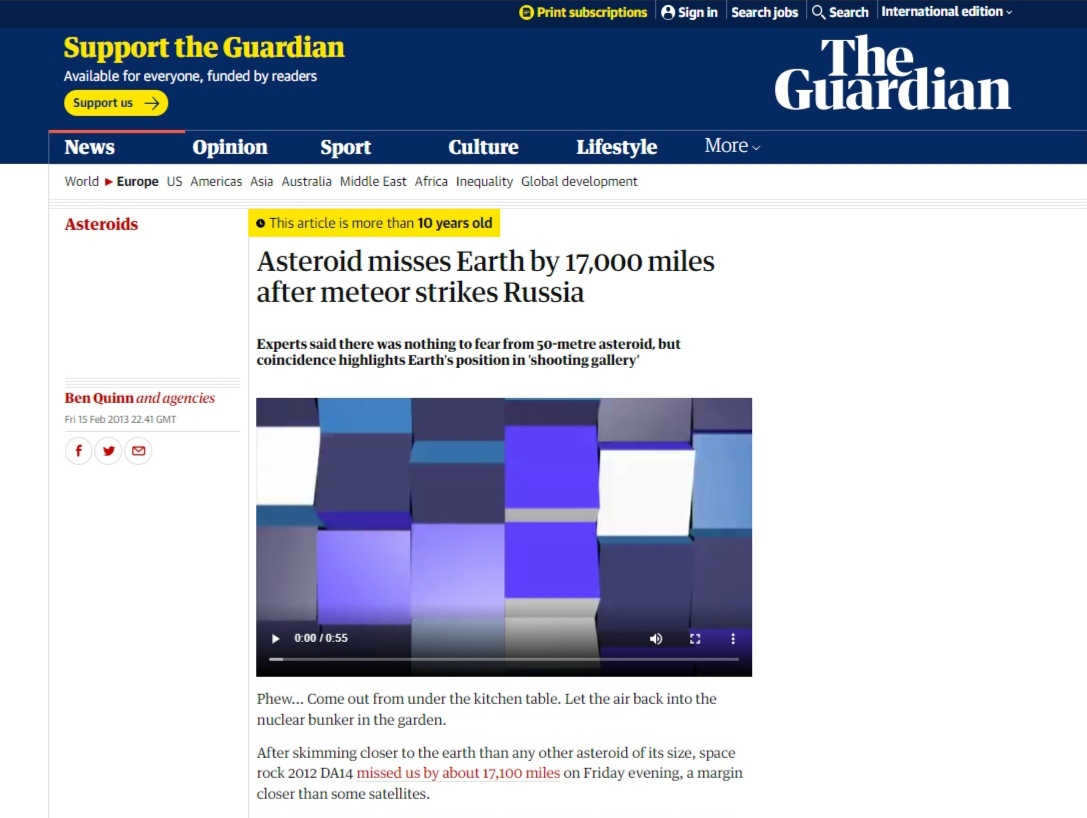
Foreign media has been making more jokes about the Chelyabinsk meteorite:
Space.com.USA: "Consider the Chelyabinsk meteorite as a wake-up call for the planet".
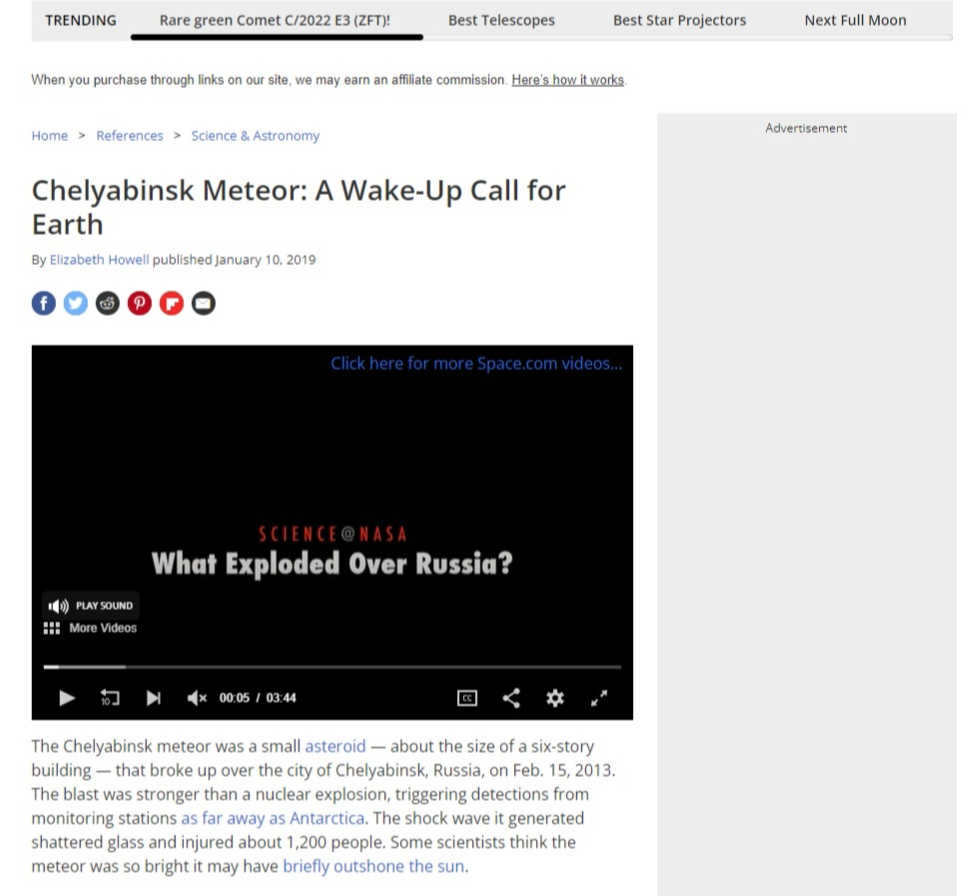
The New Yorker, USA: "There is a chance of cloudy weather with the possibility of meteorites falling as precipitation".
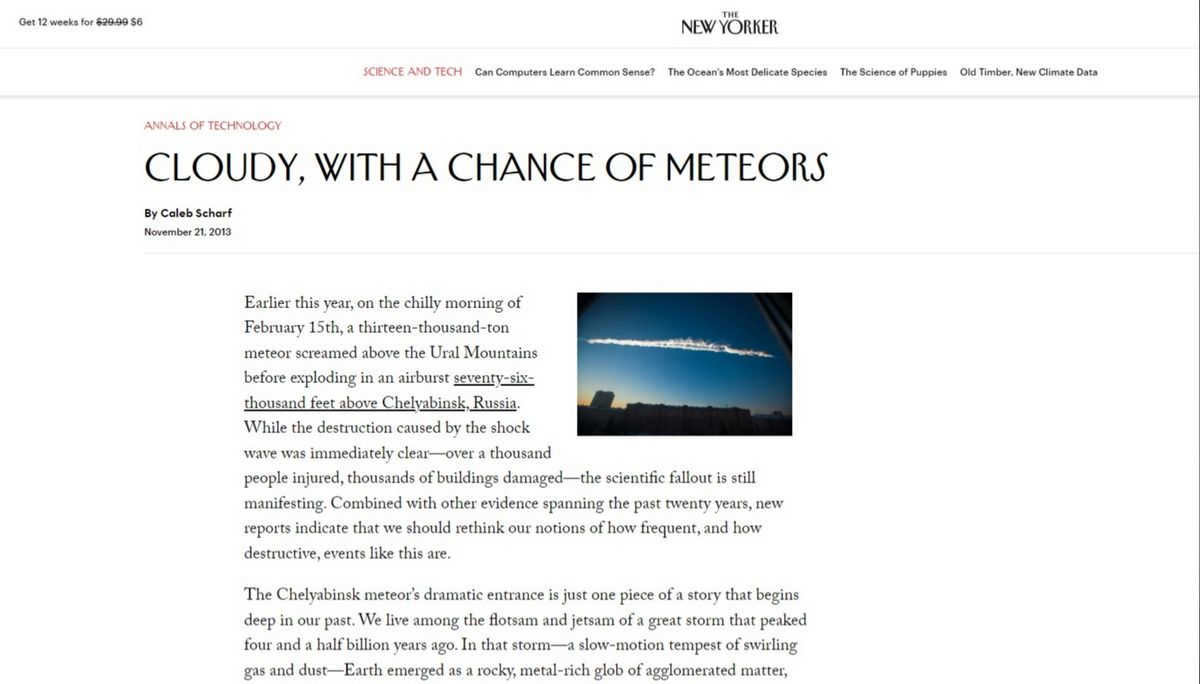
BBC, UK: “Estimate of impact frequency of the Chelyabinsk meteor was too low.”
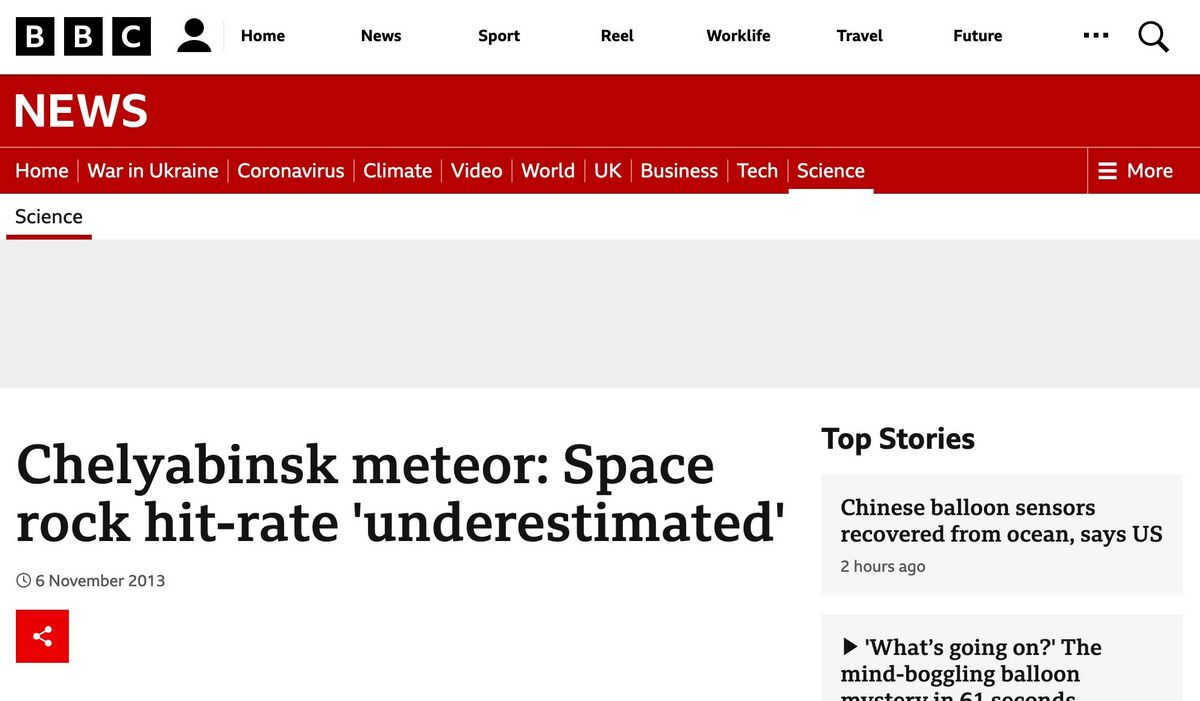
The abundance of videos captured on car dashcams and the calm response of the drivers greatly impressed the foreigners. These videos were later shown on various comedy shows, where jokes were made about the resilience of Russians. This also introduced the American audience to the existence of a city like Chelyabinsk in Russia.
The Colbert Report with Stephen Colbert, USA
The Daily Show, hosted by Jon Stewart, is a popular satirical news program in the United States.
“Russia has experienced the formation of a significant cavity.”
At the same time, international observers were astounded by the occurrence of the meteorite descent. The British publication The Telegraph characterizes the incident as a “divine cosmic blast.”
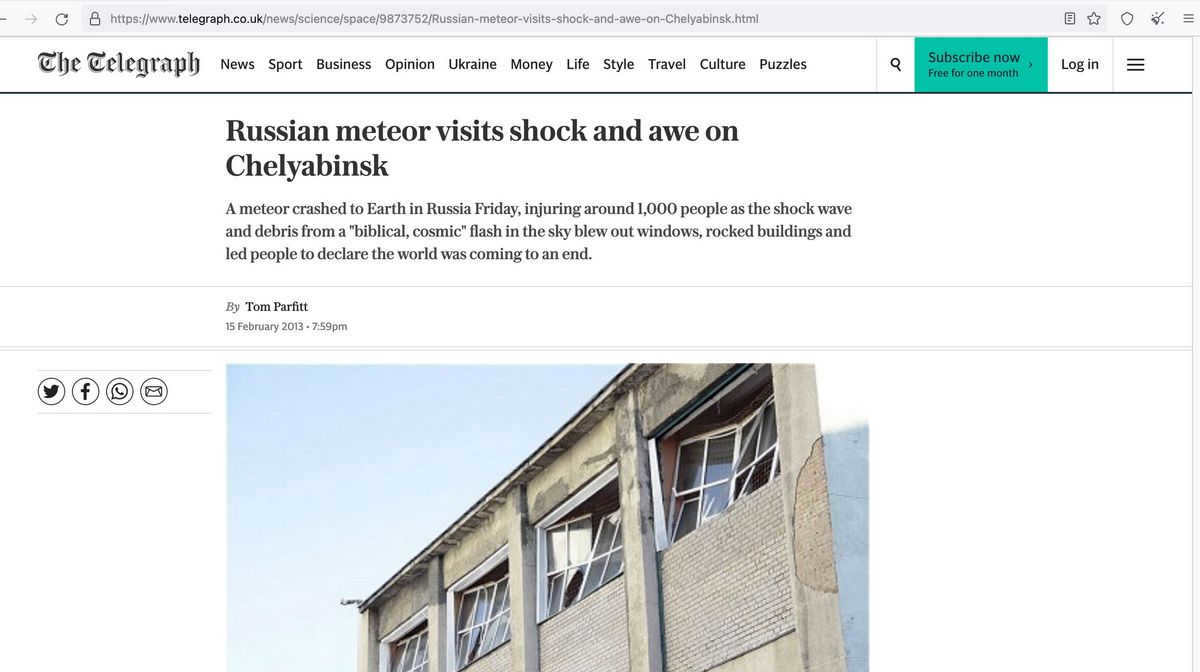
BBC, UK: A person who saw the Russian meteor said, “It seemed as if the Sun had crashed.”
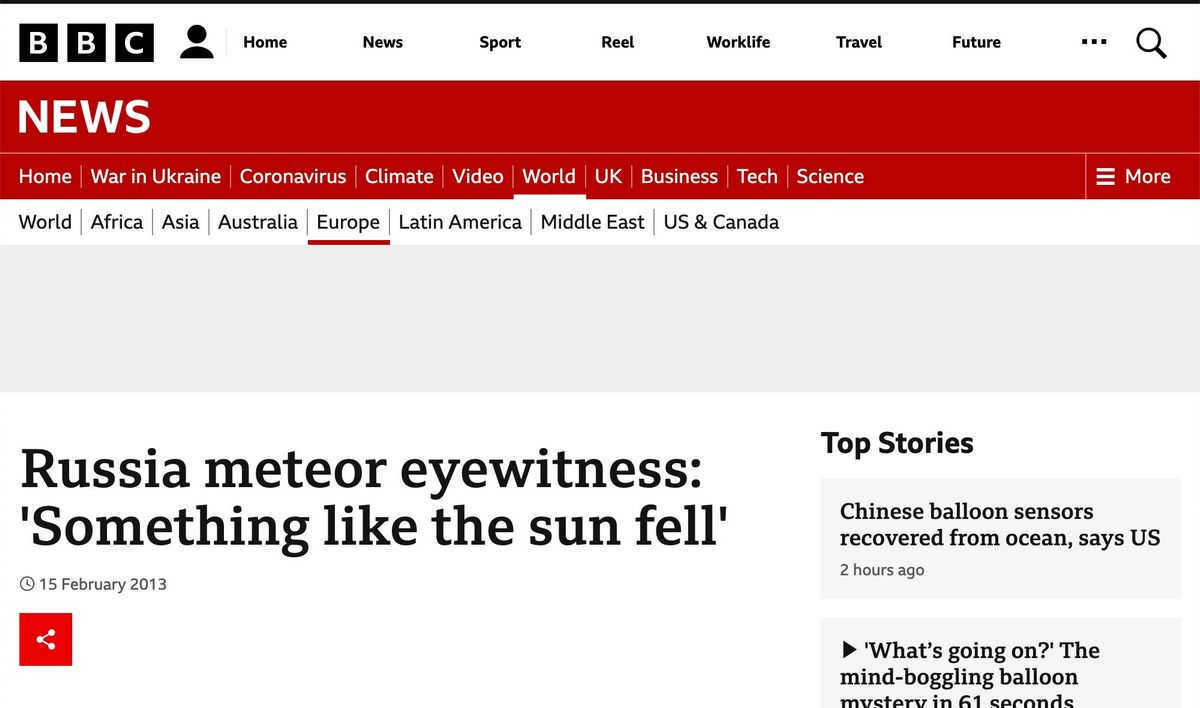
In this column, Charlie Brooker, a journalist for The Guardian in Britain, discusses the current meat scandal that is causing concern among his fellow countrymen. He draws a comparison between the scale of this scandal and the meteorite fall in Russia. The headline of his article reads: “Negatives: poor quality meat and enraged meteorites. Positives: remarkable footage.”

However, the headline that catches our attention the most is the one published by the leading newspaper of the Communist Party of China, “Renmin Zhibao”: “Russia’s meteorite fall leaves behind a massive crater”. This is the translation of the article provided for Russian-speaking readers.
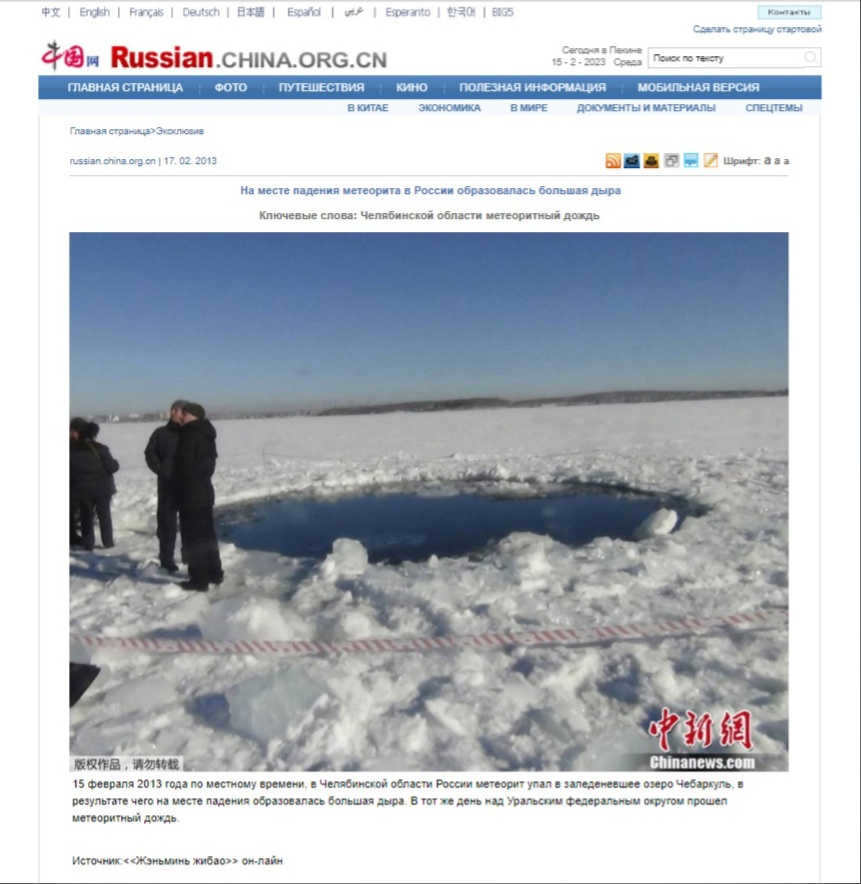
The Connection Between UFOs and the Creation of the Moon
When the meteorite crashed, it immediately captured the attention of scientists worldwide, leading to the development of numerous conspiracy theories. These are a few of the popular theories that have made headlines:
Siberian Times, Russia + UK: Did a UFO Cause the Infamous Chelyabinsk Meteorite Collision?
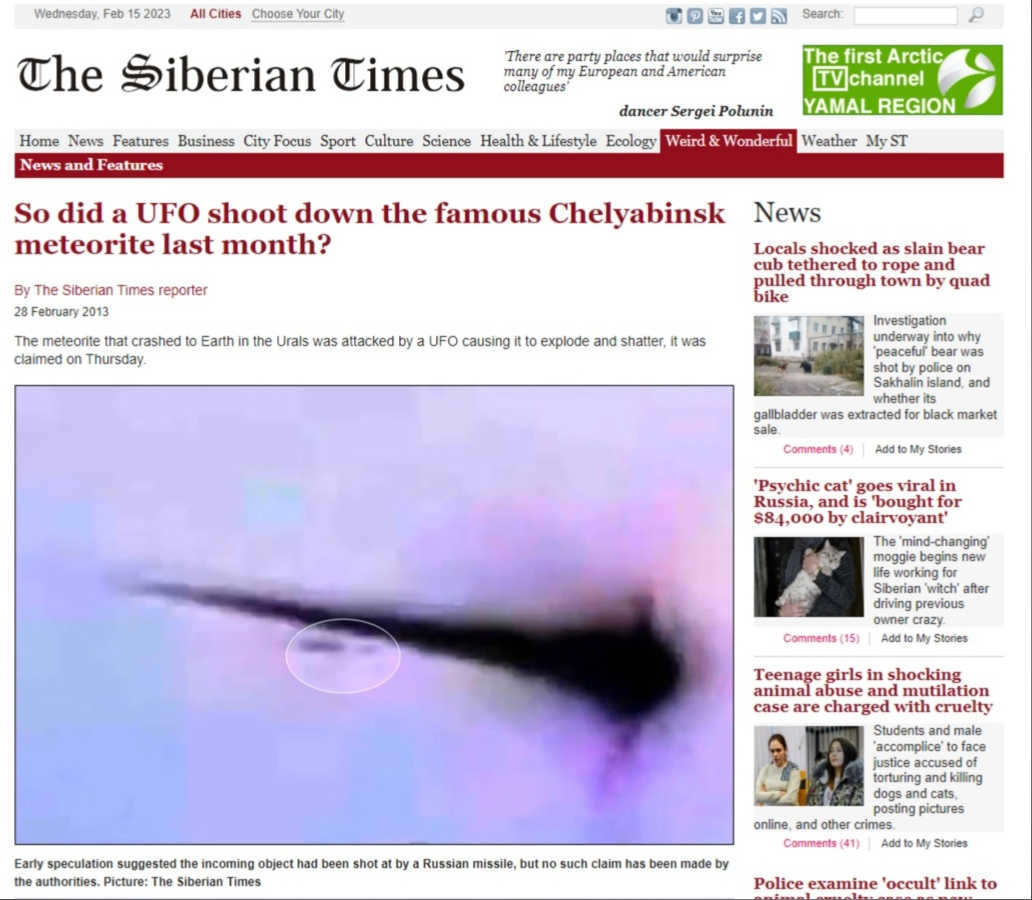
According to the Daily Mail, the Chelyabinsk meteorite may have played a role in the creation of the LUNA.
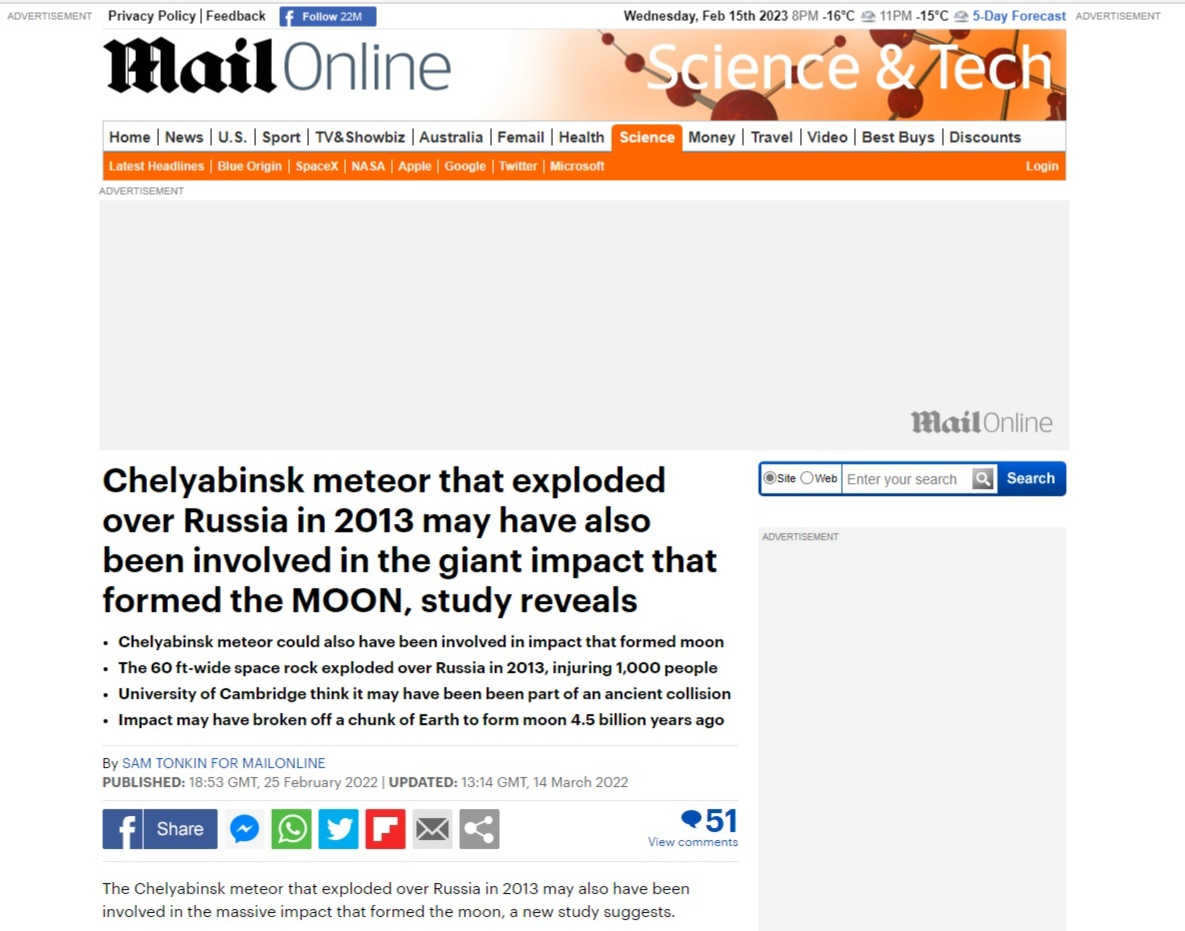
“Zhenmin Zhibao, PRC: “Emergency in the vicinity of Chelyabinsk: meteorite or another object?”
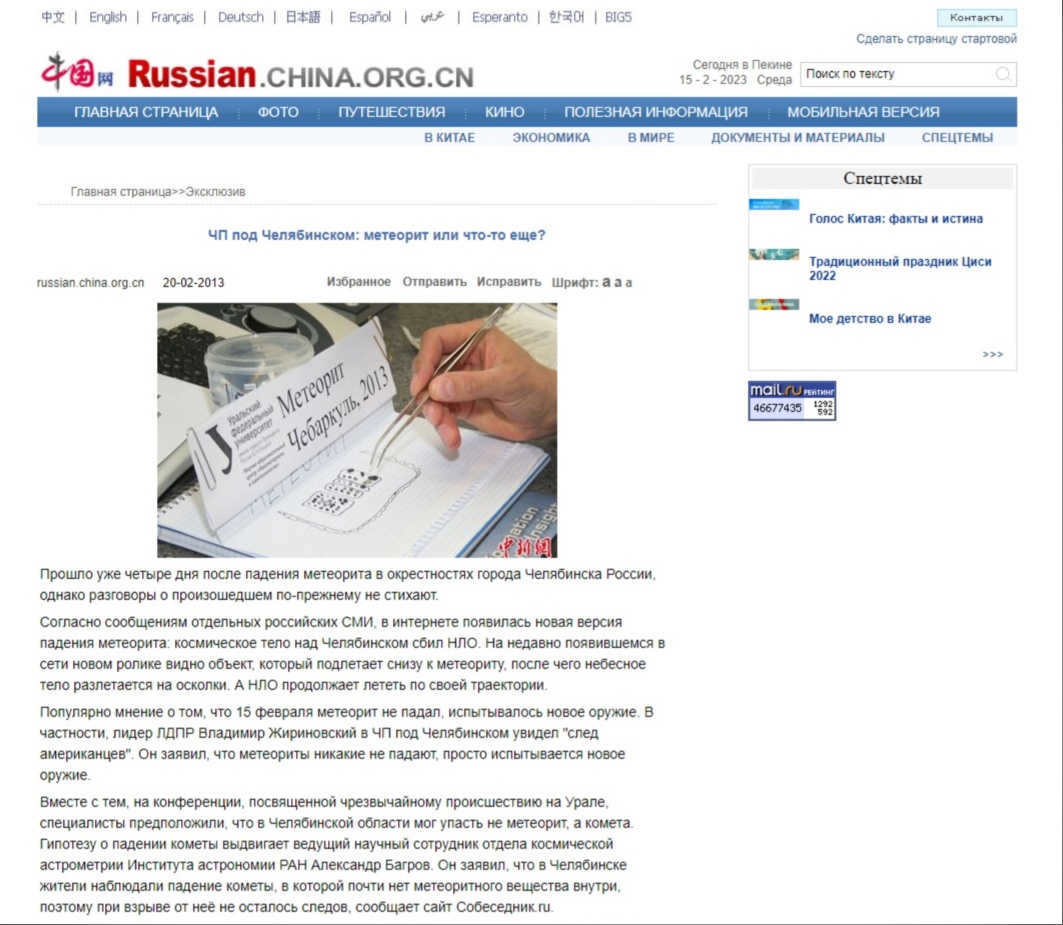
The Chebarkul meteorite has been determined to be approximately the same age as the solar system, according to a report from the Xinhua News Agency in China.
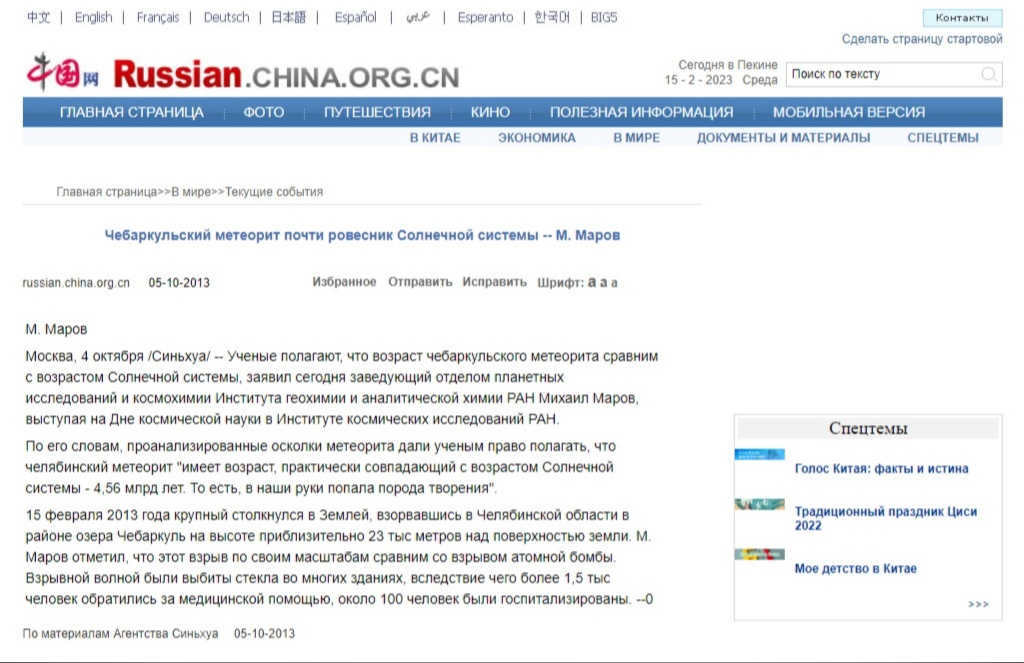
Consequences
Aside from debates and controversies, the impact of the meteorite has sparked speculation. For instance, the Chinese Information Internet Center reported the following about the meteorite:
“A Chinese tourist shared a piece of the ‘Chebarkul’ meteorite on their blog.”

“The meteorite explosion over Russia led to a surge in the collection of space debris in China”
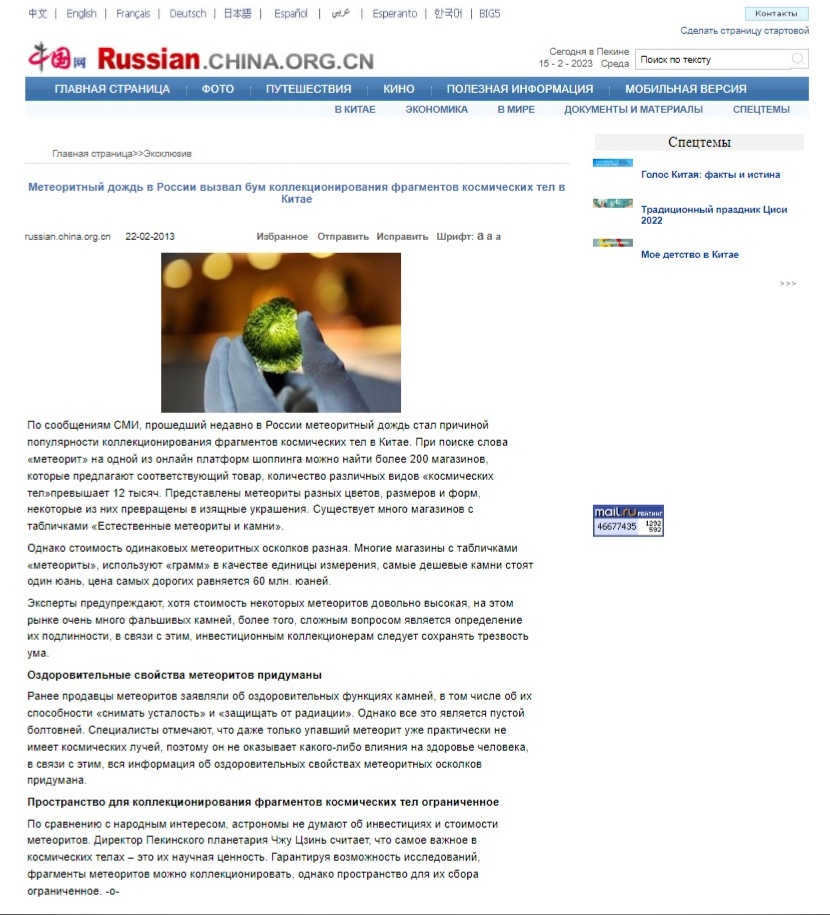
"Pieces of the Chelyabinsk meteorite have surfaced on the popular Chinese online marketplace, Taobao"
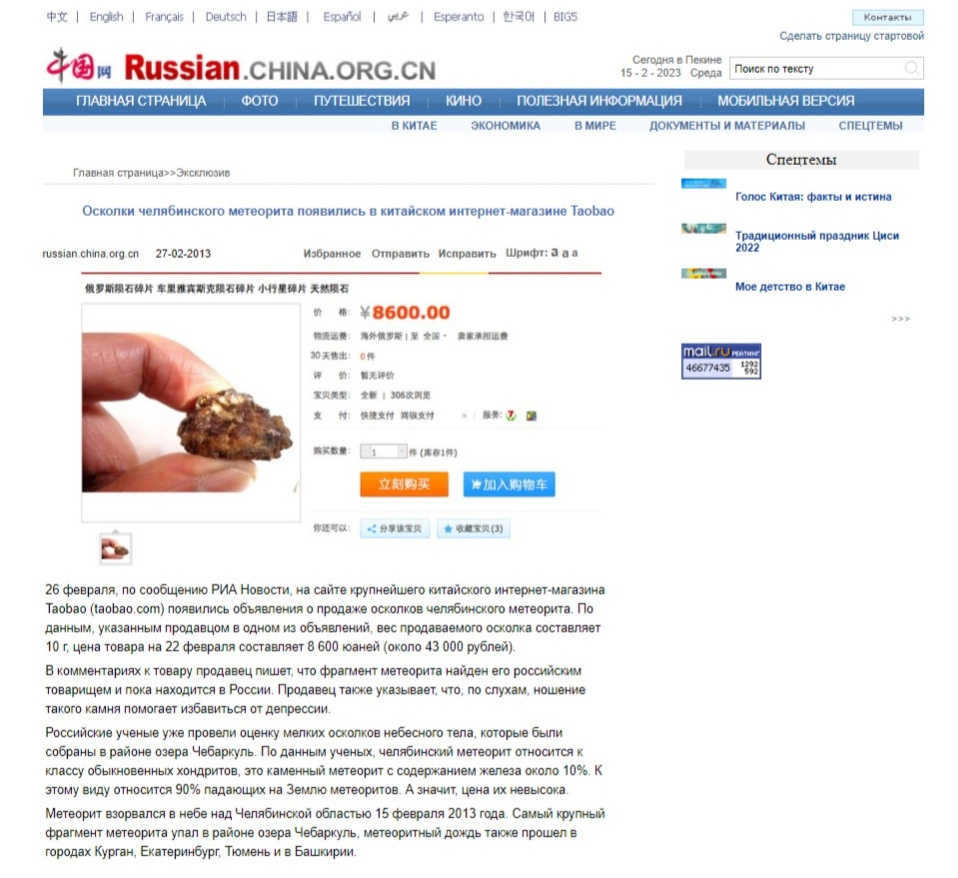
"The black market for meteorites is booming, with prices as high as 670 US dollars per gram"
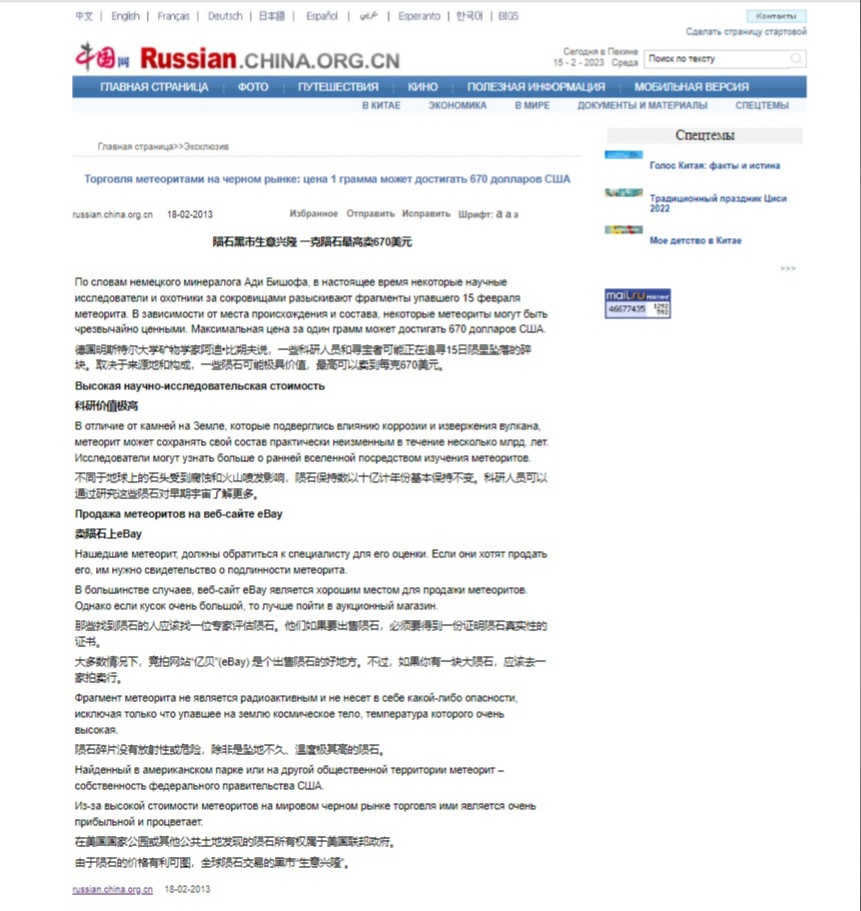
Top and bottom Russian media coverage
Immediately following the bright flash and powerful explosion that shattered windows in numerous Chelyabinsk buildings, there was a shortage of information regarding the incident. Local media proposed several theories, including an airplane crash. “Good News” was also among the first to release a post compiling accounts from eyewitnesses, but official statements had to be awaited. However, it seems that in their pursuit of speed, the editors of the Chelyabinsk Times published a piece with the attention-grabbing headline “Something exploded in Chelyabinsk”. No falsehoods!
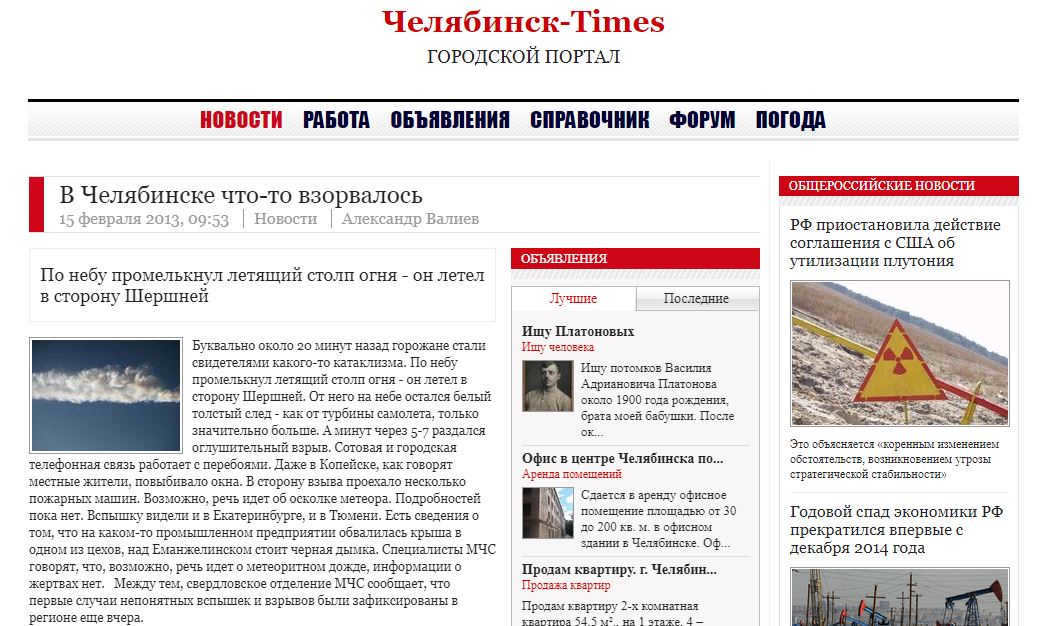
Unfortunately, “Channel One” had a much less fortunate experience. Their story still exists on the internet, in which they mistakenly showed the gas crater “Gates of Hell” in Turkmenistan under the pretense of it being the crater from the Chelyabinsk meteorite. It is possible that at the time of the story, the staff of the Emergencies Ministry had not yet located the actual site of the meteorite’s fall, and therefore the picture was necessary.
As a bonus, someone caused a disturbance on “Wikipedia” by falsely claiming that Chelyabinsk was destroyed – this was documented on the website magopc.ru.
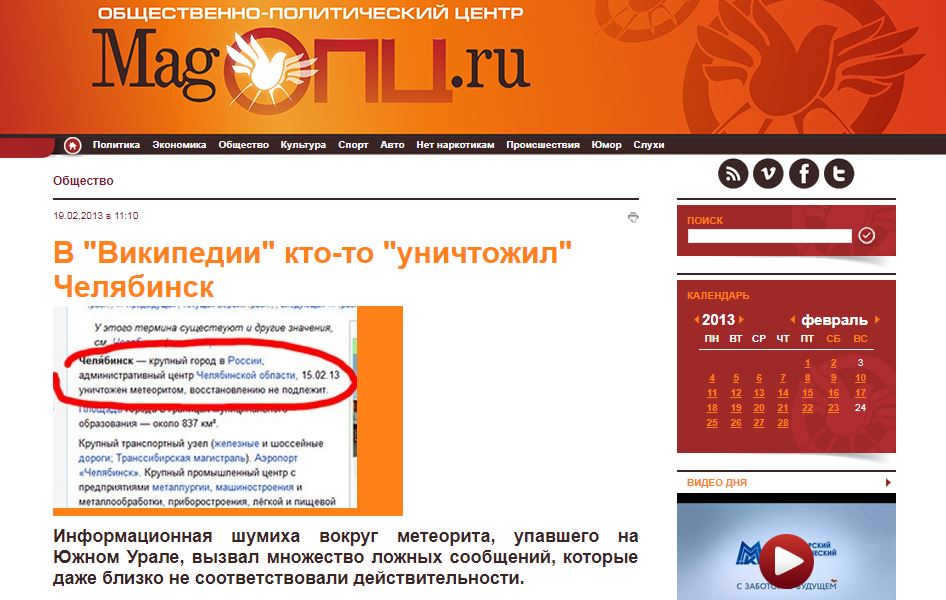
By the way, previously “Good News” reconstructed the timeline of the events on February 15, 2013, hour by hour – gathering photographs and eyewitness testimonies, as well as official agency comments.
Also, check out:
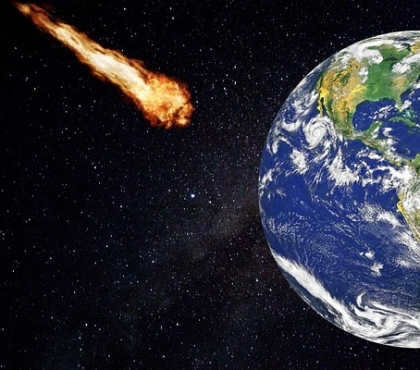
Teacher Elena Abramkina shares the story of a morning nine years ago.
Also, don’t forget to subscribe to our telegram channel, Chelyabinsk Inhaler, for more uplifting news.
Feel free to share your own news and stories with us.
Contact us on Viber at +79226337117.

On the 15th of February in the year 2013, a rather average celestial object crashed in close proximity to the city of Chelyabinsk. What made the descent of this object remarkable was the specific location and timing. This event marked the first occasion in recorded history where a sizable meteorite has plummeted in a densely inhabited region, consequently resulting in unprecedented levels of destruction.
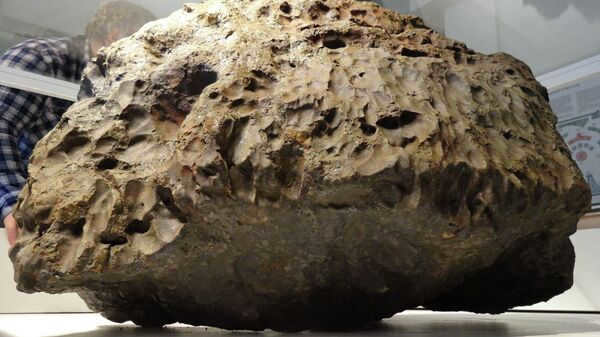
MOSCOW, February 14 – RIA Novosti. On February 15, 2013, the residents of the southern Urals experienced a catastrophic event from outer space – the descent of an asteroid that caused significant damage to humans, marking the first occurrence of such magnitude in history.
Immediately following the event, local residents reported an explosion of an unidentified object and witnessed strange flashes. Over the course of a year, scientists have been diligently investigating this phenomenon, and their findings up until now are detailed in RIA Novosti’s comprehensive report.
What was that?
A rather typical celestial object fell in the vicinity of Chelyabinsk. Incidents of this magnitude occur approximately once every 100 years, and according to certain data – even more frequently, up to five times per century. Scientists hypothesize that objects measuring around ten meters in diameter (about half the size of the Chelyabinsk object) enter the Earth’s atmosphere roughly once a year, although this occurrence is more common over the oceans or sparsely populated areas. These objects typically explode and disintegrate at high altitudes without causing any harm.
Before its fall, the Chelyabinsk asteroid had a size of approximately 19.8 meters and a mass ranging from 7,000 to 13,000 tons. Scientists estimate that only 4 to 6 tons actually reached the Earth’s surface, which is about 0.05% of its original mass. Currently, only about 1 ton has been collected, including the largest fragment weighing 654 kilograms, which was retrieved from the bottom of Lake Chebarkul.
Based on geochemical analysis, it has been determined that the Chelyabinsk space object belongs to the LL5 class of ordinary chondrites. Chondrites are a common type of stone meteorite, accounting for approximately 87% of all meteorites found. They are characterized by the presence of chondrons, which are millimeter-sized rounded grains consisting of partially melted material.
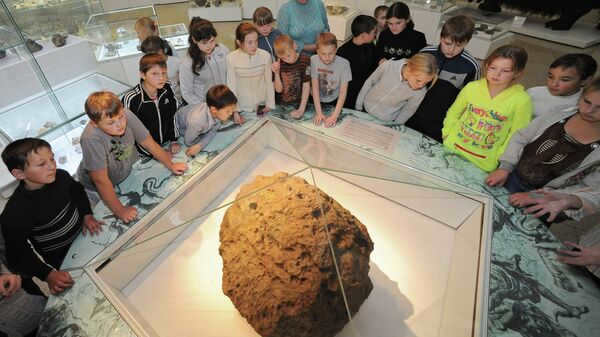
The infrasound stations’ data indicates that the explosion that occurred when the Chelyabinsk asteroid rapidly decelerated at an altitude of approximately 90 kilometers had a power of 470 to 570 kilotons in TNT equivalent. This is 20-30 times more powerful than the nuclear explosion in Hiroshima, but more than ten times less powerful than the explosion during the Tunguska catastrophe (ranging from 10 to 50 megatons).
What made this meteorite fall unique was its location and timing. It is the first recorded case in history of a large meteorite falling in a densely populated area, resulting in significant damage. A total of 1.6 thousand people sought medical attention, 112 of whom were hospitalized, and glass in 7.3 thousand buildings was shattered.
As a result of this unprecedented event, scientists were able to gather an enormous amount of data. This meteorite fall is now considered the best-documented one in history. Interestingly, one of the video cameras even managed to capture the moment when the largest fragment plunged into Lake Chebarkul.
From where did this fragment originate?
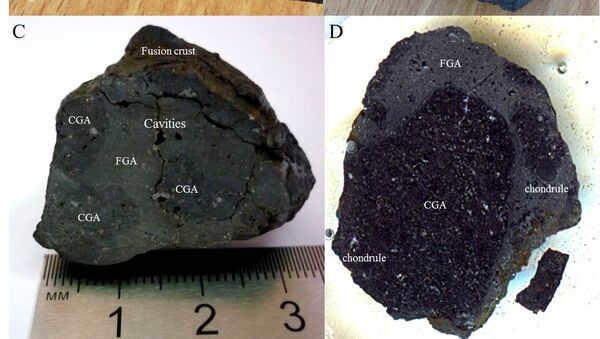
Scientists quickly provided an answer to this question: the Chelyabinsk meteorite came from the main asteroid belt of the solar system, which is located between the orbits of Mars and Jupiter. This region is home to numerous small celestial bodies, some of which have elongated orbits that can intersect with Earth’s orbit.
Thanks to the abundance of videos, photos, and satellite images capturing the Chelyabinsk bolide’s flight, astronomers were able to accurately reconstruct its trajectory. They then traced this path back beyond the atmosphere to determine the orbit of the meteorite.
Various groups of astronomers attempted to reconstruct the Chelyabinsk body’s trajectory prior to its collision with Earth. Their calculations revealed that the Chelyabinsk asteroid had a major semi-major axis of approximately 1.76 astronomical units (the average radius of the Earth’s orbit), with perihelion (the point in the orbit closest to the Sun) at a distance of 0.74 units and aphelion (the farthest point) at 2.6 units.
Armed with these data, scientists endeavored to locate the Chelyabinsk asteroid within catalogs of previously discovered small bodies. It is known that many asteroids that have been previously discovered are “lost” over time, and some are even discovered multiple times. Scientists did not discount the possibility that the Chelyabinsk object belonged to this category of “lost” bodies.
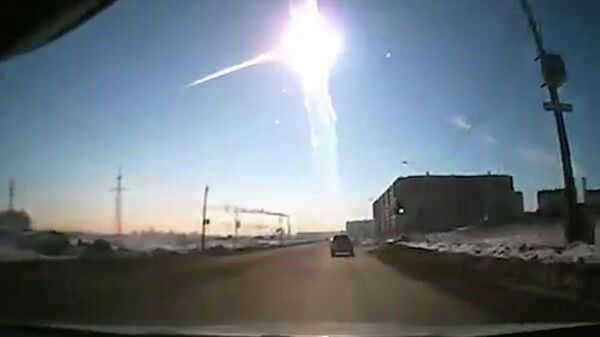
Even though an exact match couldn’t be found, researchers have discovered several potential “relatives” of the Chelyabinsk meteorite. Jiri Borovichka’s team from the Astronomical Institute of the Czech Academy of Sciences calculated the trajectory of the Chelyabinsk object and found that it closely resembles the orbit of the 2.2-kilometer asteroid 86039 (1999 NC43). Specifically, both bodies have a similar major semi-major axis of 1.72 and 1.75 astronomical units, as well as a perihelion distance of 0.738 and 0.74.
Carlos and Raul de la Fuente Marcos, Spanish astronomers, conducted an analysis of all the possible orbits of the Chelyabinsk space object and discovered an alternative potential origin for the Chelyabinsk superbolide – asteroid 2011 EO40. According to their findings, it is believed that the Chelyabinsk asteroid separated from asteroid 2011 EO40 approximately 20-40 thousand years ago.
A Biographical Account of Complexity
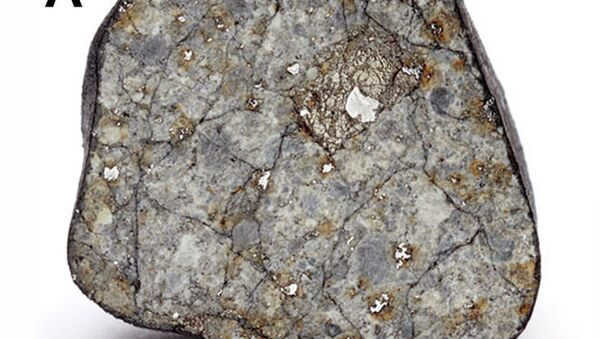
The fragments that fell to Earth from the Chelyabinsk space body have provided scientists with valuable insights into its history. It has been discovered that the Chelyabinsk asteroid is approximately the same age as the solar system, with an estimated age of 4.45 billion years. This determination was made by analyzing the ratio of lead and uranium isotopes.
Interestingly, the Chelyabinsk asteroid experienced a significant event around 290 million years ago – a collision with another celestial body. This can be observed through the presence of dark veins within its structure, which are evidence of material melting during the powerful impact.
Simultaneously, scientists posit that it was an exceedingly rapid occurrence. Traces of cosmic particles – the imprints of iron nuclei – were unable to undergo the process of liquefaction, signifying that the collision itself transpired in a time span no greater than a few minutes, assert experts at the Vernadsky Institute of Geochemistry and Analytical Chemistry of the Russian Academy of Sciences.
Conversely, it is plausible that the indications of liquefaction may have materialized due to the asteroid’s proximity to the Sun during its approach, as postulated by researchers at the Institute of Geology and Mineralogy (IGM) SB RAS.
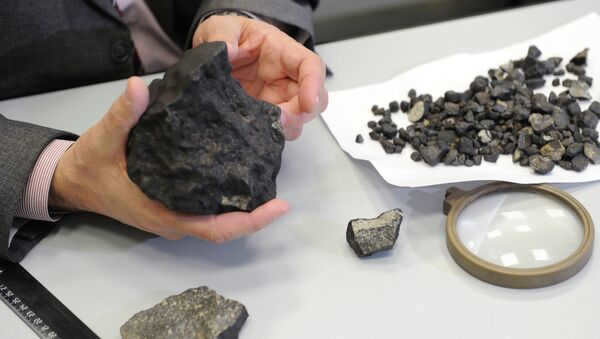
CHELYABINSK, February 14 – RIA Novosti. It has been five years since the significant event that put Chelyabinsk on the global map occurred in the Chelyabinsk region – the local residents and those in nearby areas witnessed the descent of a meteorite. Furthermore, a fragment of the meteorite was discovered and is currently available for scientific examination.
What occurred
On February 15, 2013 at 09:20 (07:20 Moscow time), a highly luminous bolide was witnessed by thousands of individuals in the Chelyabinsk region and nearby areas. In the initial moments following the bolide’s passage, onlookers observed the expansion and swirling of its smoke plume, which was then followed by the impact of a shockwave. This shockwave resembled the sound of a powerful explosion. Subsequently, subsequent waves of lesser intensity sonic booms were audible, as well as noises reminiscent of thunder rolls.


Sergei Zamozdra, a professor in the theoretical physics department at Chelyabinsk State University, stated to RIA Novosti that the meteoroid had a kinetic energy of approximately 500 kilotons in TNT equivalent, which is equivalent to the energy of several dozen Hiroshima atomic bombs. The meteoroid’s velocity upon entering the atmosphere was 19 kilometers per second, and its mass is estimated to be around 11,000 tons, corresponding to a diameter of about 19 meters.
He stated that below an altitude of 45 kilometers, the meteoroid began to fracture into pieces, with each piece splitting into even smaller fragments. The dispersion field of the fragments extended for 80 kilometers and reached a width of seven kilometers. A meteorite shower fell on the territories of multiple municipal districts in the Chelyabinsk region, leading to the collective designation of the fallen fragments as the Chelyabinsk meteorite.
The researcher highlighted that the Chelyabinsk bolide was significant because it allowed for the collection of not only meteorites, but also meteor dust. Three expeditions were conducted by scientists and students from Chelyabinsk State University, as well as five enthusiasts from Magnitogorsk, to gather meteorite dust from the snow.
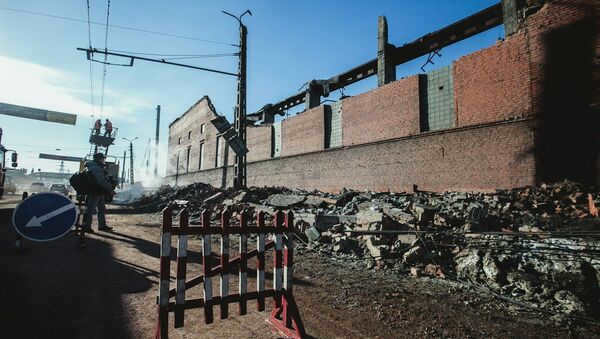
Sergei Zamozdra suggests that the Chelyabinsk meteorite may have originated from the asteroid 2008 DJ when it came close to the Sun 1-2 million years ago. Alternatively, calculations show that the parent body of the meteorite could have been asteroid 2011 EO40. Furthermore, the meteorite’s low strength and the relatively small mass of the fragments found (1-2 tons) indicate the presence of a significant amount of ice in the Chelyabinsk meteorite, suggesting that it may have been part of a comet nucleus.
Furthermore, Professor Nikolai Gorkavy from Chelyabinsk State University’s Department of Theoretical Physics, who serves as a data analyst for NASA’s Suomi satellite, made an intriguing discovery regarding the Chelyabinsk bolide. After analyzing the data, he found that the dust from the bolide circulated in the northern hemisphere for a duration of four days, creating a dust belt at altitudes ranging from 30 to 40 kilometers. This remarkable finding earned him the prestigious Goddard Award.
Gorkavy also utilized a microscope to examine the meteorite dust and made an intriguing observation. He discovered mineral filaments within the dust, resembling strands of mineral wool. These filaments are similar to those produced during volcanic eruptions, which are referred to as “Pele’s hair”. Previously, it was believed that mineral filaments and particles with tails found near meteorite craters were a result of the impact of the meteorite with the ground. However, it is now evident that these filaments and tails can form during the heated phase of a meteoroid’s flight, even without impact.

Eyewitness testimonies
Lyubov Perekhodnova, a resident of Chelyabinsk, recounts her experience of the event. She was in her apartment on the fifth floor with her husband and young daughter when it happened. “Suddenly, there was a blinding flash of light, illuminating the entire room. At first, it looked like the sun was setting, but then it felt like something flew into the room. The brightness was so intense that it temporarily blinded me. After a moment, everything went quiet, followed by a series of explosions that felt very close, like bombs going off. I also felt the shockwave. My husband initially thought it was an airplane explosion…” she recalled.
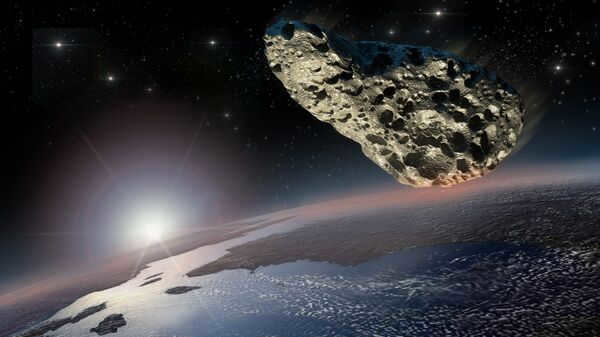
Nadezhda Romanova, an instructor at Chelyabinsk Lyceum No. 77, recounts that on that specific day, similar to any other day, classes were being conducted at the school. She was teaching her students in the classroom when the bell rang, indicating the end of the lesson and the start of recess. “Right after that, all of a sudden, everything became illuminated with a brilliant light, followed by an explosion, a loud bang. The windows in the classroom were shaking, shaking. As for the children at recess, we were unable to gather them,” she stated. However, surprisingly, there was no need to panic or evacuate. During the evacuation process, the older students assisted the younger ones in getting dressed, and everyone made their way outside, where the children were subsequently sent home.
Andrei Komissarov, an employee of a security company, who was present in the city center while working in an office building, states that the meteorite caused quite a scare among all the employees. Many of them rushed out into the street, completely unaware of what was happening. In addition, all the car alarms went off simultaneously.
Tatyana Kuznetsova, who was employed at kindergarten No. 350 at that time, recalls being at work that morning.
"…there was a sudden burst of bright light and a loud clap, and for a moment, I thought the war had begun… the phones were not functioning… there was widespread panic," she recounted. Subsequently, all the parents were urgently notified to pick up their children from the kindergarten. According to her, the nearby kindergarten suffered greater damage – their windows shattered, resulting in injuries to several children.
According to the press service of the Governor of the region, it was reported that the shock wave caused the windows of residents in the Chelyabinsk region to shatter and doors to be ripped off. Over 1.6 thousand individuals were injured, primarily from falling glass, with no fatalities.
The Fate of the Lake
The largest fragment of the meteorite was discovered at the bottom of Lake Chebarkul in the town of the same name – approximately 80 kilometers away from Chelyabinsk. It was split into three pieces and was retrieved from the lake in October 2013. The combined weight of the fragments was around 650 kilograms.
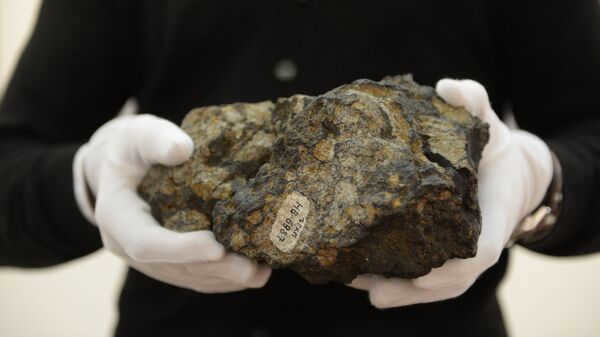
Five years later: encounter the “celestial visitor”
The State Historical Museum of the Southern Urals is currently home to the largest piece of the meteorite, which has become one of its main attractions.
Vitalina Silina, the head of the department of special projects at the Historical Museum, reveals that the fragment’s weight in the museum currently stands at 503-505 kilograms, with the last measurement taken in 2015. During its first year on Earth, the extraterrestrial visitor experienced a loss in weight as it absorbed water while resting in the lake, which gradually evaporated over time.
The museum houses the largest meteorite ever found, which is kept under a special dome. However, on Thursday, February 15, at 09.20 (07.20 Moscow time) – the exact time when the meteorite flew over Chelyabinsk and landed in the lake five years ago – visitors will have the opportunity to physically touch the meteorite. In celebration of this event, the museum staff will raise the dome on that day.
Vitalina Silina mentioned that after the dome is raised, the museum will offer tours for anyone interested. Visitors will have the chance to learn about the most famous meteorites that have landed in the Urals and Russia throughout history. Additionally, on this day, admission to the museum will be discounted by half.
Furthermore, a round table discussion titled “The Museum’s Meteorite: Debunking Myths and Unveiling Reality” will take place at 12:00 (10:00 Moscow time) in the Nature and Ancient History Hall. This engaging event will feature experts and scientists who actively participated in the research of the Chelyabinsk meteorite.
In 2013, the Chebarkul museum proudly unveiled the captivating exhibition “The Chebarkul Meteorite.” Tatyana Zapevalova, the museum’s director, revealed that they possess a four-kilogram fragment of the meteorite, which is carefully safeguarded under a specialized dome and coated with a protective varnish to prevent deterioration. She added, “Similar to the Chelyabinsk regional museum, we will also organize a special activity called ‘Touch the Meteorite,’ where visitors can touch the fragment on February 15 and make a wish.”

Moreover, she mentioned that the third fragment of the extraterrestrial visitor, weighing approximately 25 kilograms, is not a permanent feature of the exhibitions in Chelyabinsk. Instead, it frequently “travels” to various exhibitions across the country.
According to the press service of the city administration of Chebarkul, there will be a festive concert on the main square of Chebarkul to commemorate the anniversary of the meteorite’s fall. Additionally, children born on this day will be honored. Furthermore, a flash mob is scheduled to take place at 17:00 (15:00 Moscow time) on Lenin Square, where participants will align themselves in the shape of the ice hole formed in the lake from the meteorite’s impact and release balloons into the sky.
Can the meteorite pose a danger to people?
Scientists in Chelyabinsk are cautioning residents who are tempted to touch the meteorite about the unknown consequences. Contrary to the museums’ invitation, geologist Sergey Kolisnichenko, the author of the book “Meteorites of Russia,” highlights the meteorite’s unique behavior on Earth, which is still poorly understood. He advises against touching the meteorite due to the abundance of bacteria that inhabit it. Furthermore, the long-term effects of these bacteria remain uncertain. Kolisnichenko speculates that the meteorite may even become covered in mold in the future.
© NASA’s Chandra X-ray Observatory and Hubble Telescope have recently made an incredible discovery in the vast expanse of the Universe. They have detected a supermassive black hole devouring the galaxy SDSS J1354 + 1327. Interestingly, this black hole has encountered some resistance in its feeding frenzy, as it was unable to consume all of the surrounding stellar material. In fact, it experienced two instances where it rejected this “food”. Scientists estimate that approximately 100 thousand years passed between these cosmic “burps”. This fascinating celestial object is situated about 900 million light years away from Earth in the constellation Volopasa.
